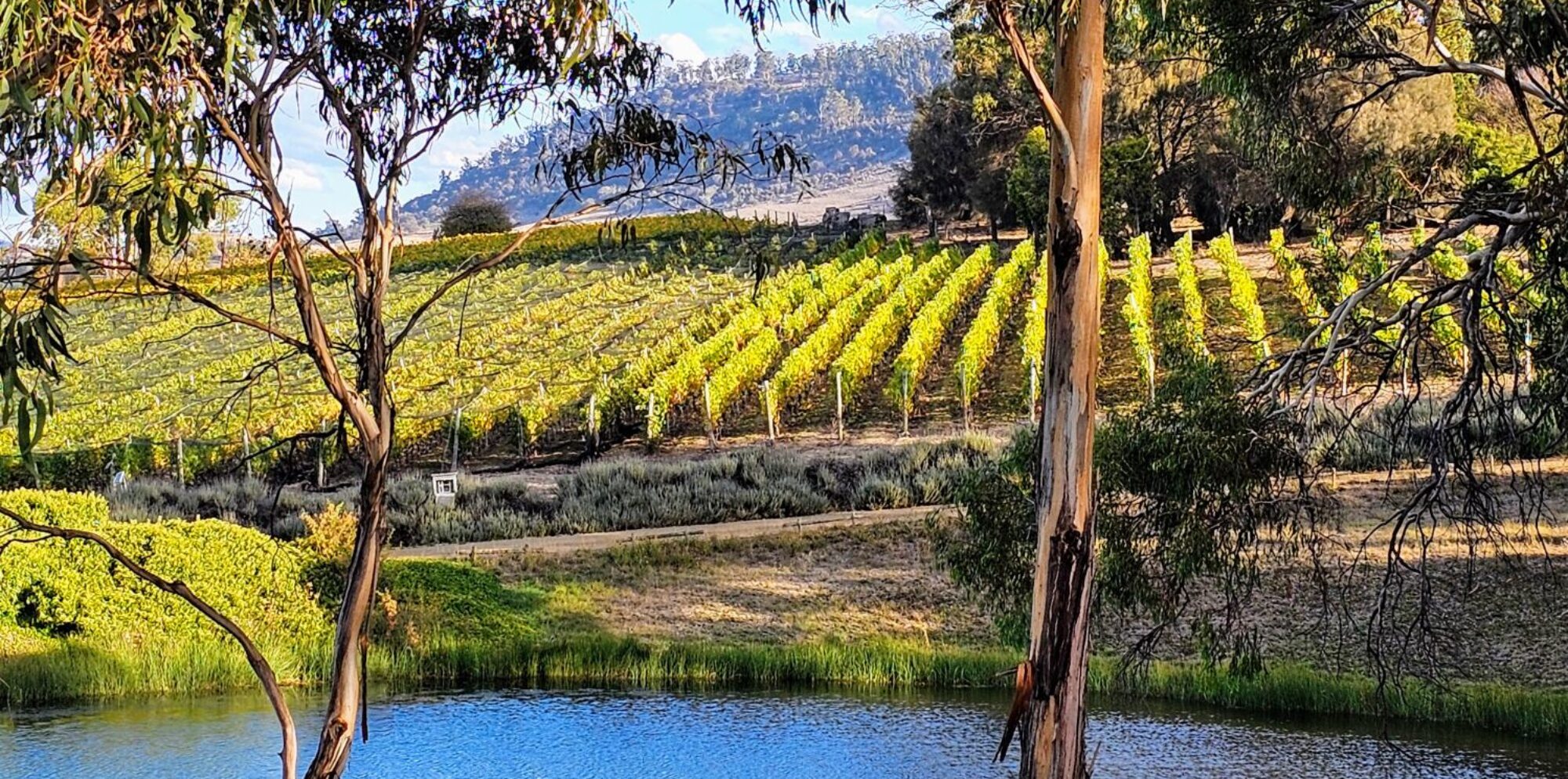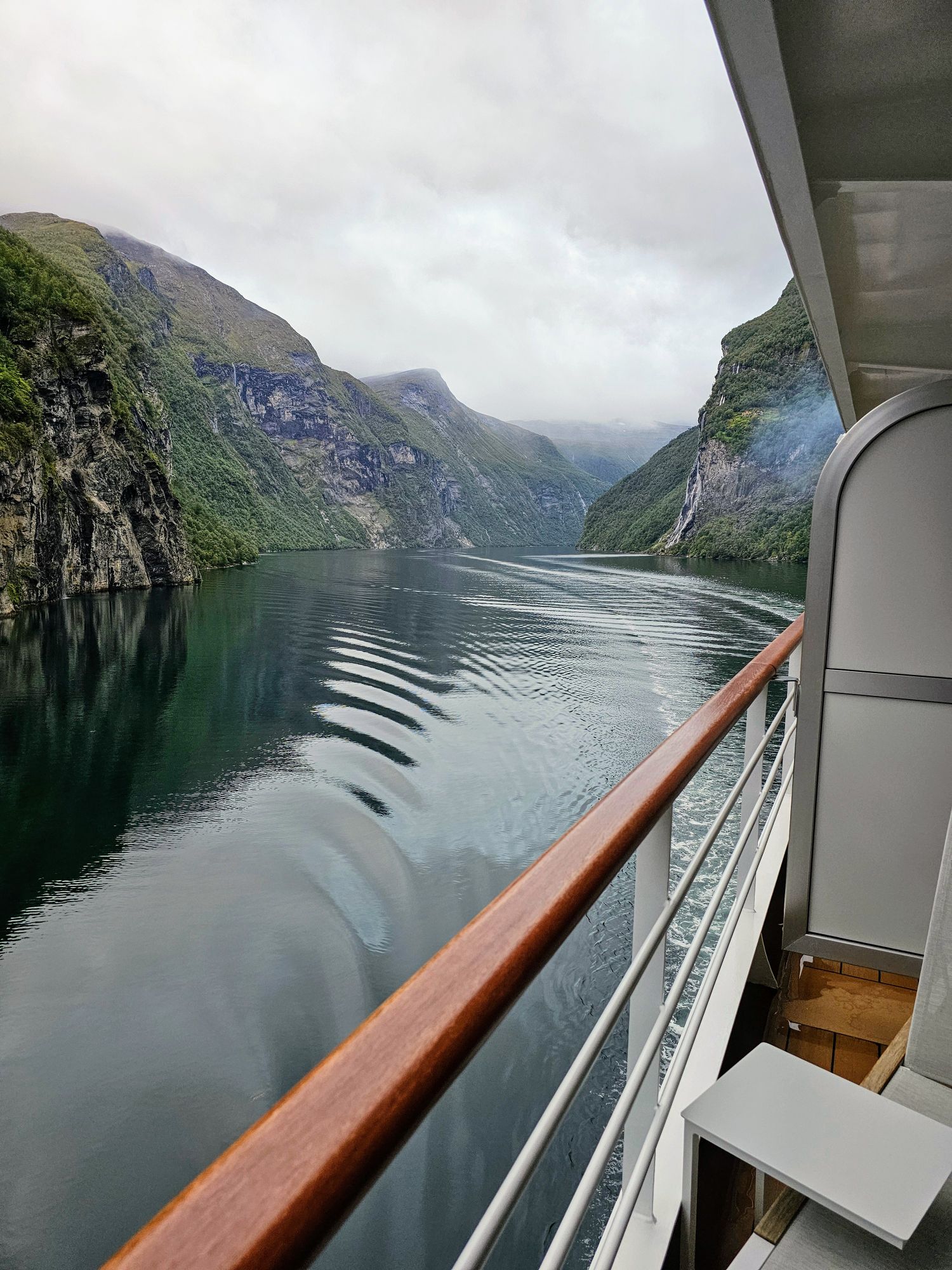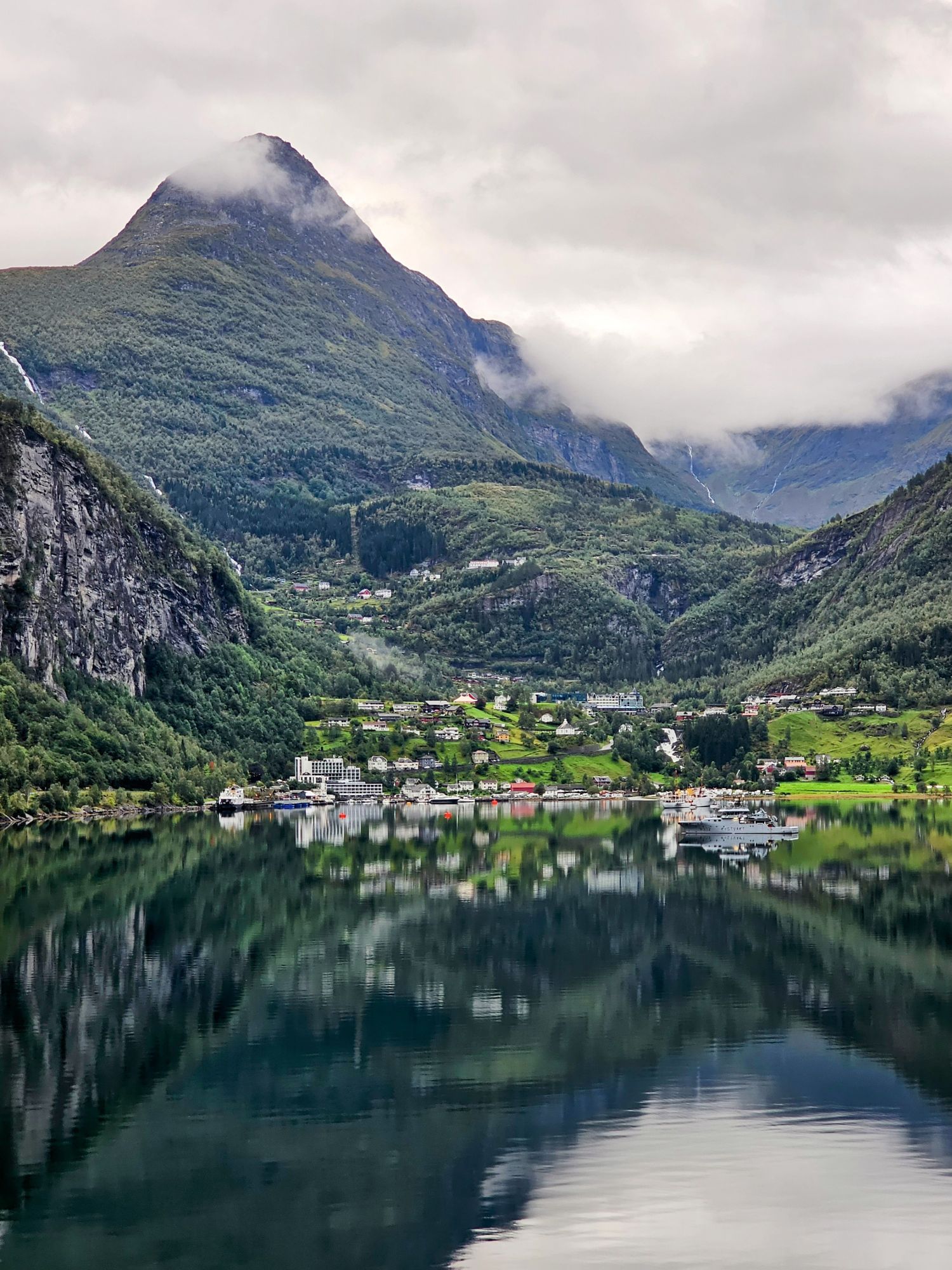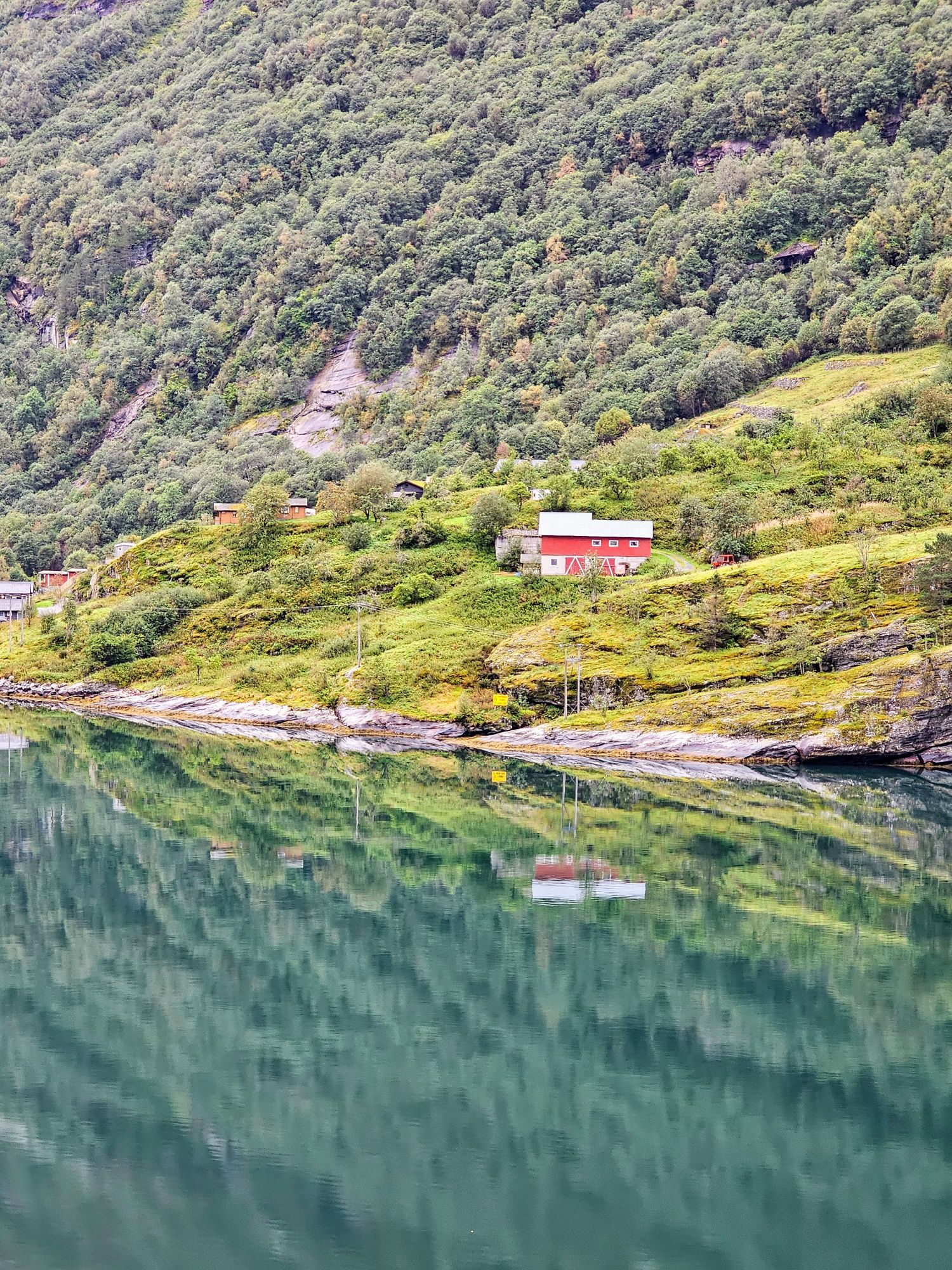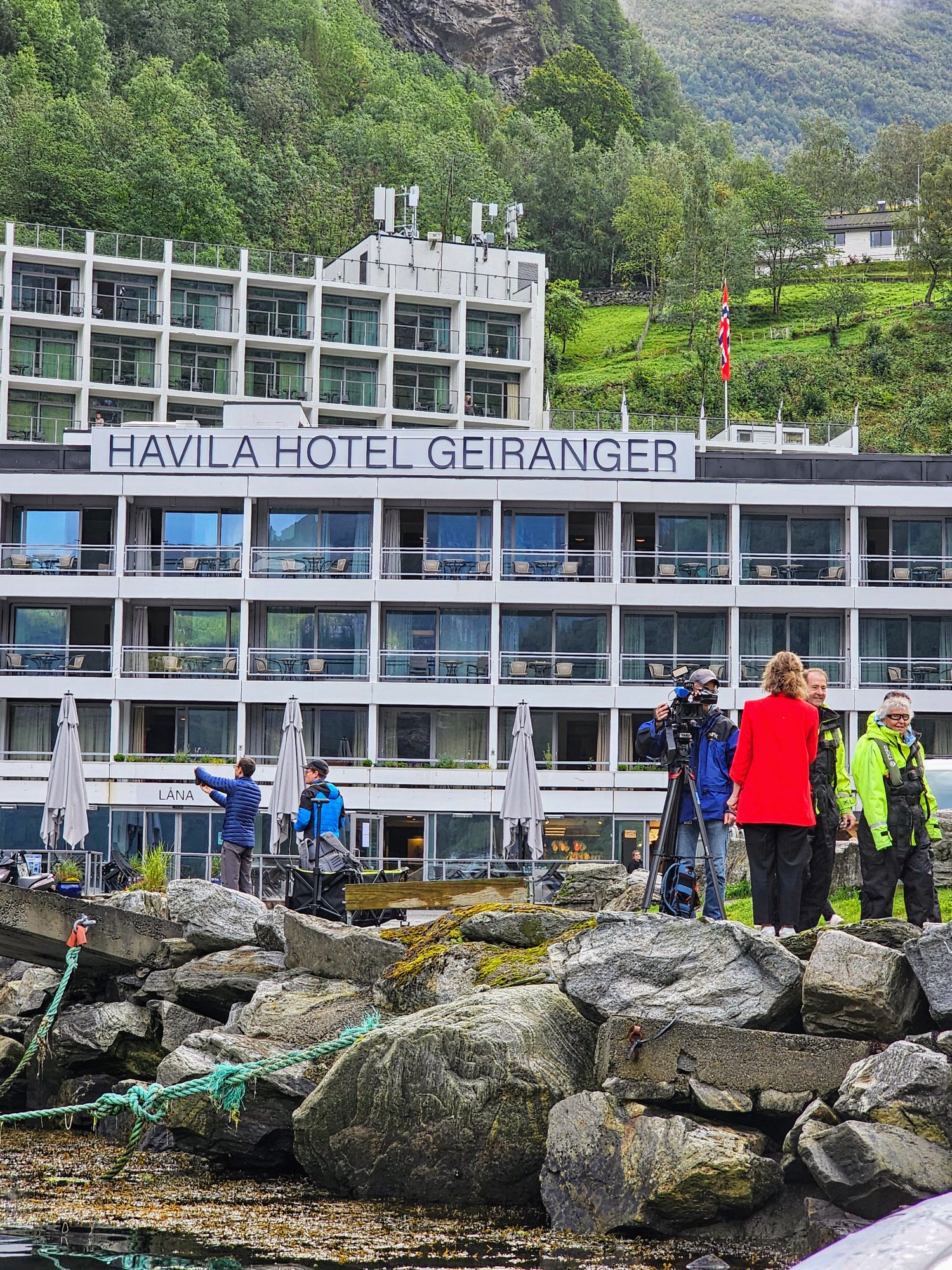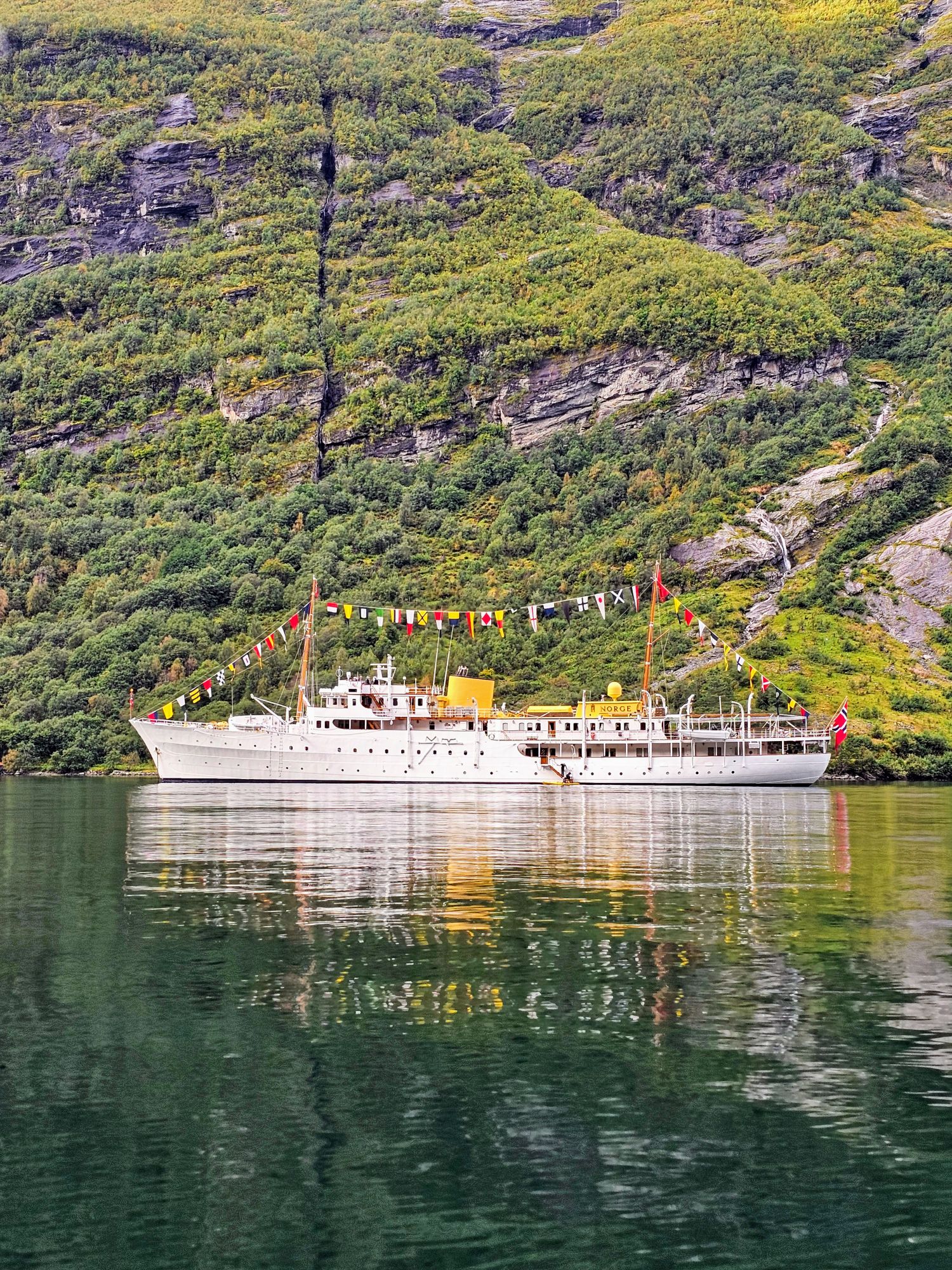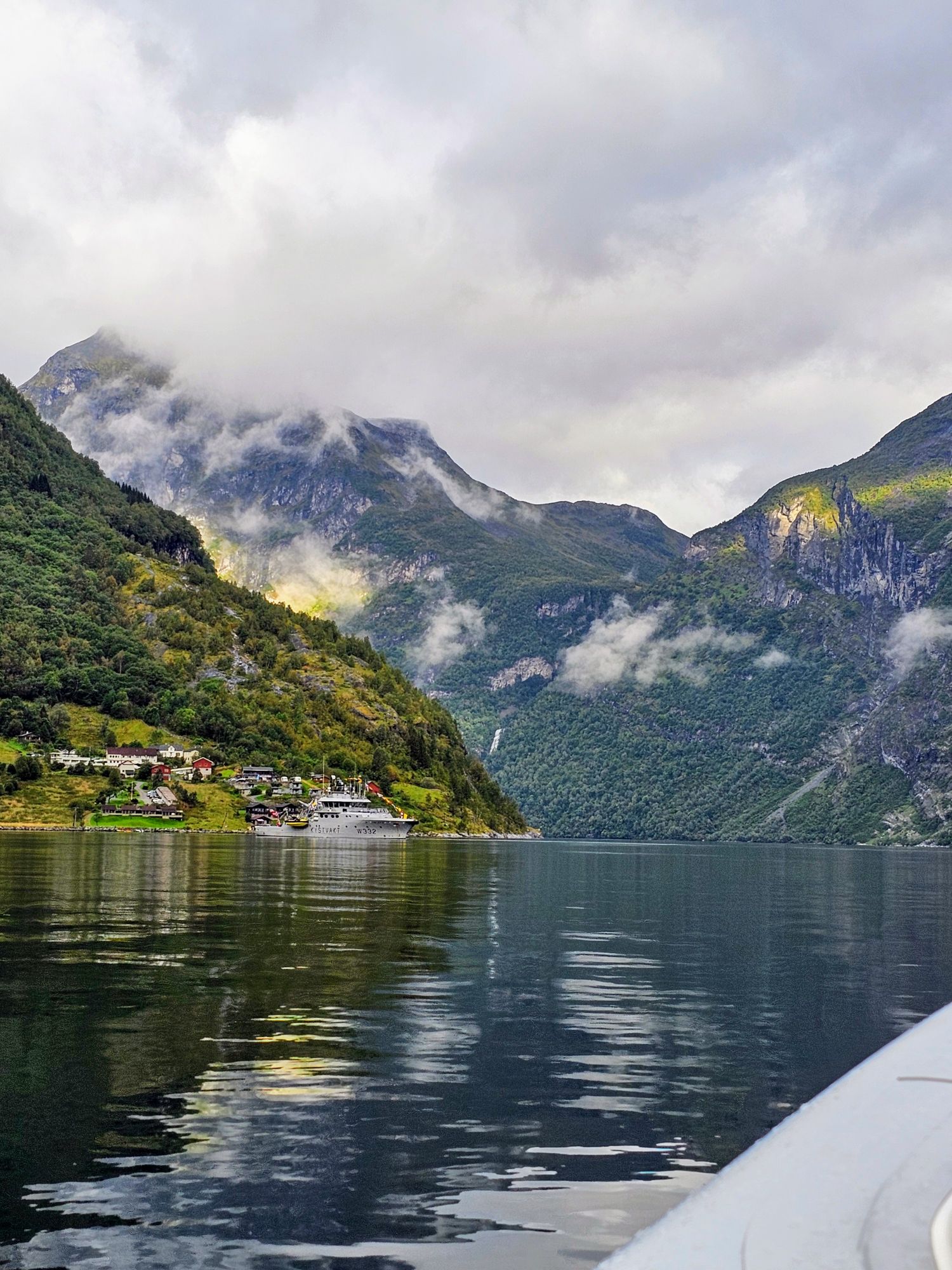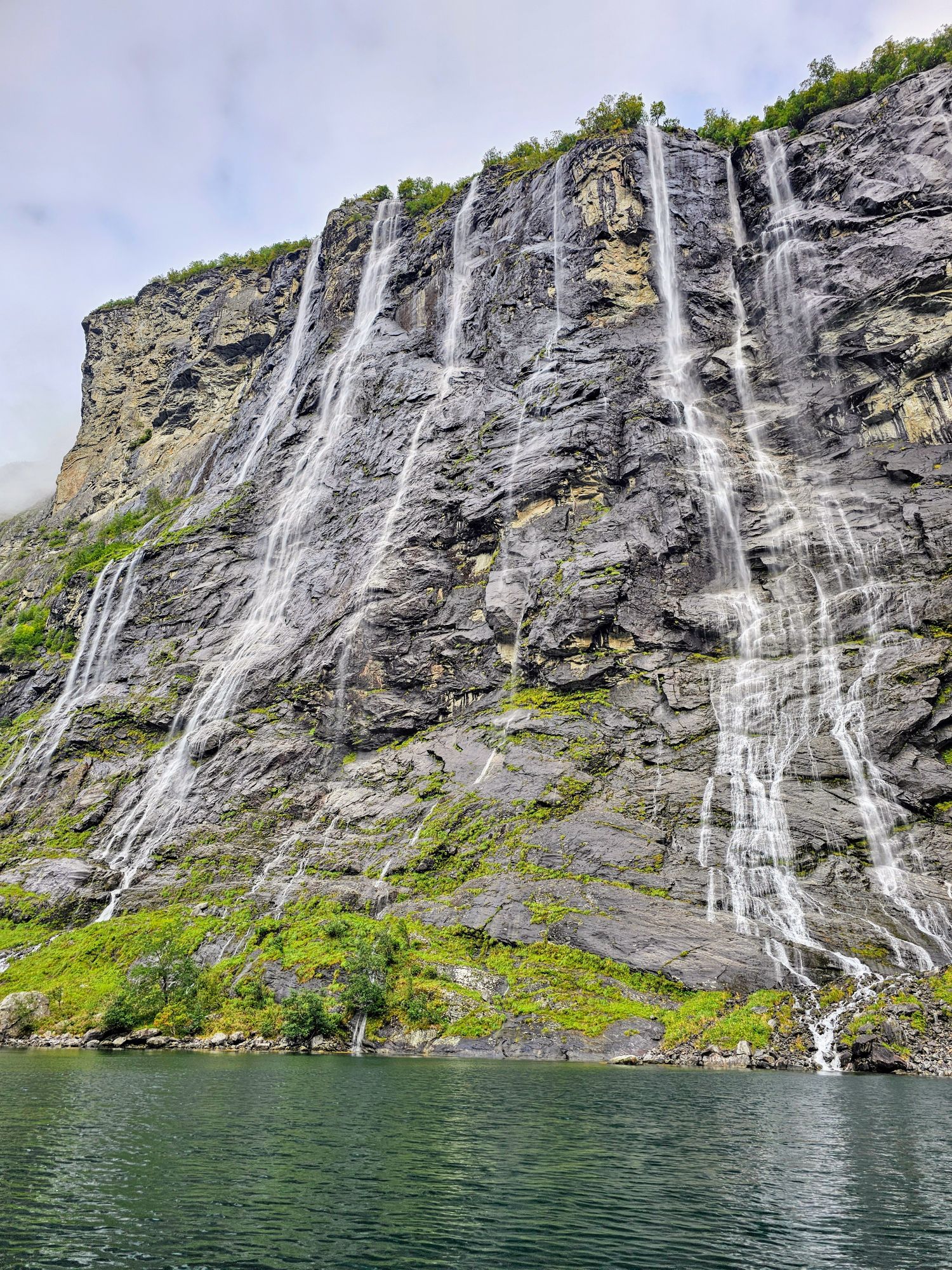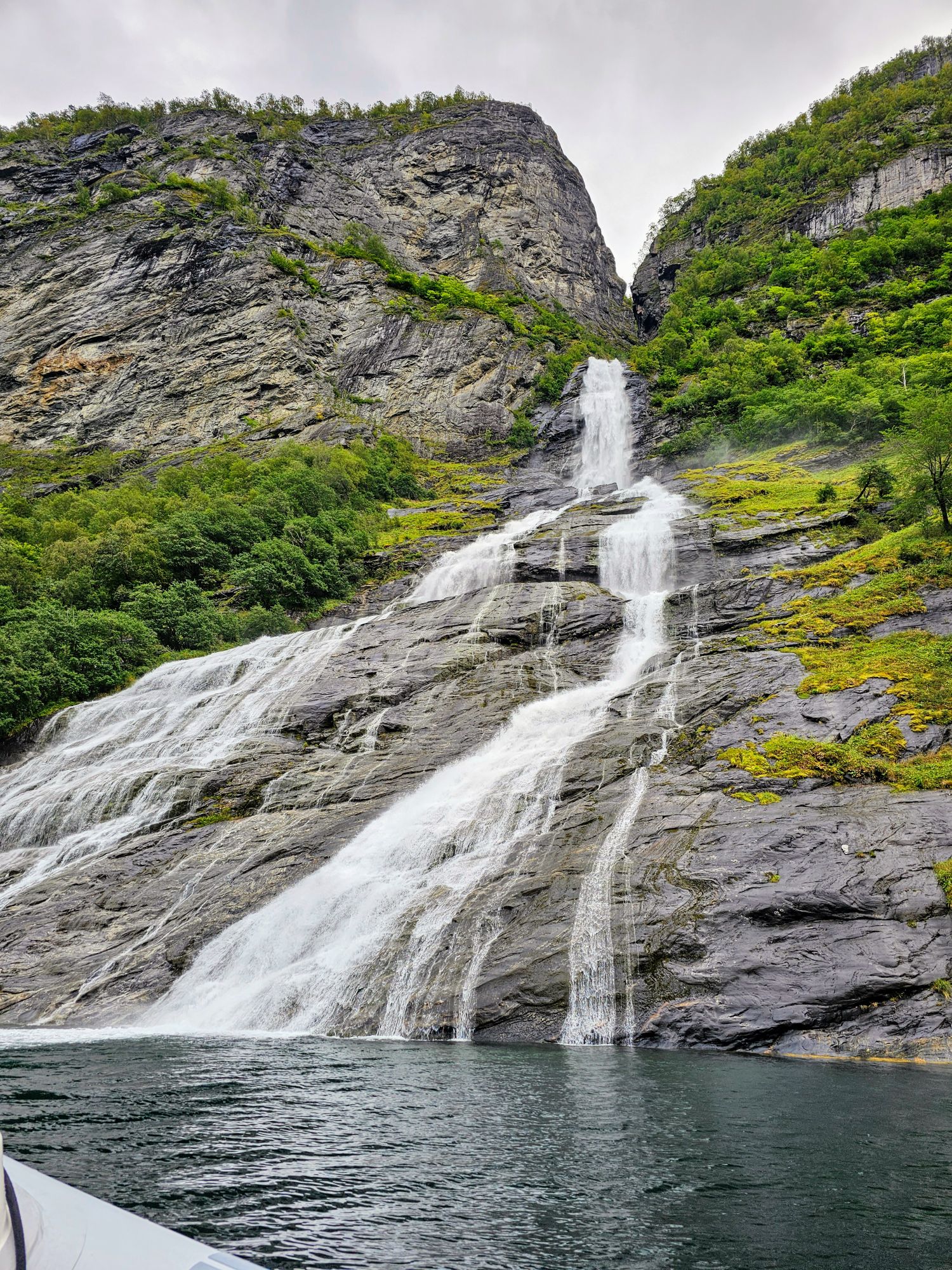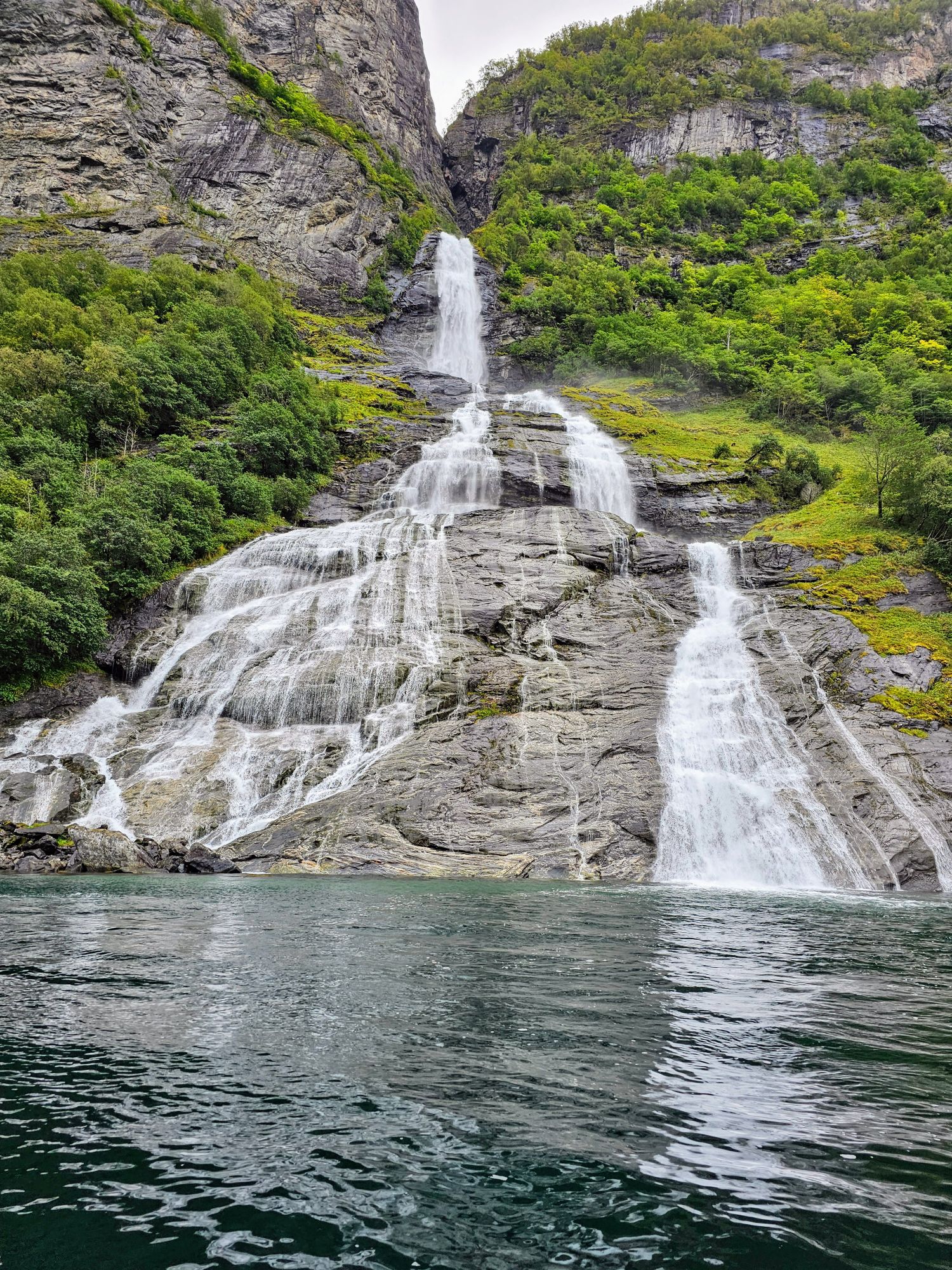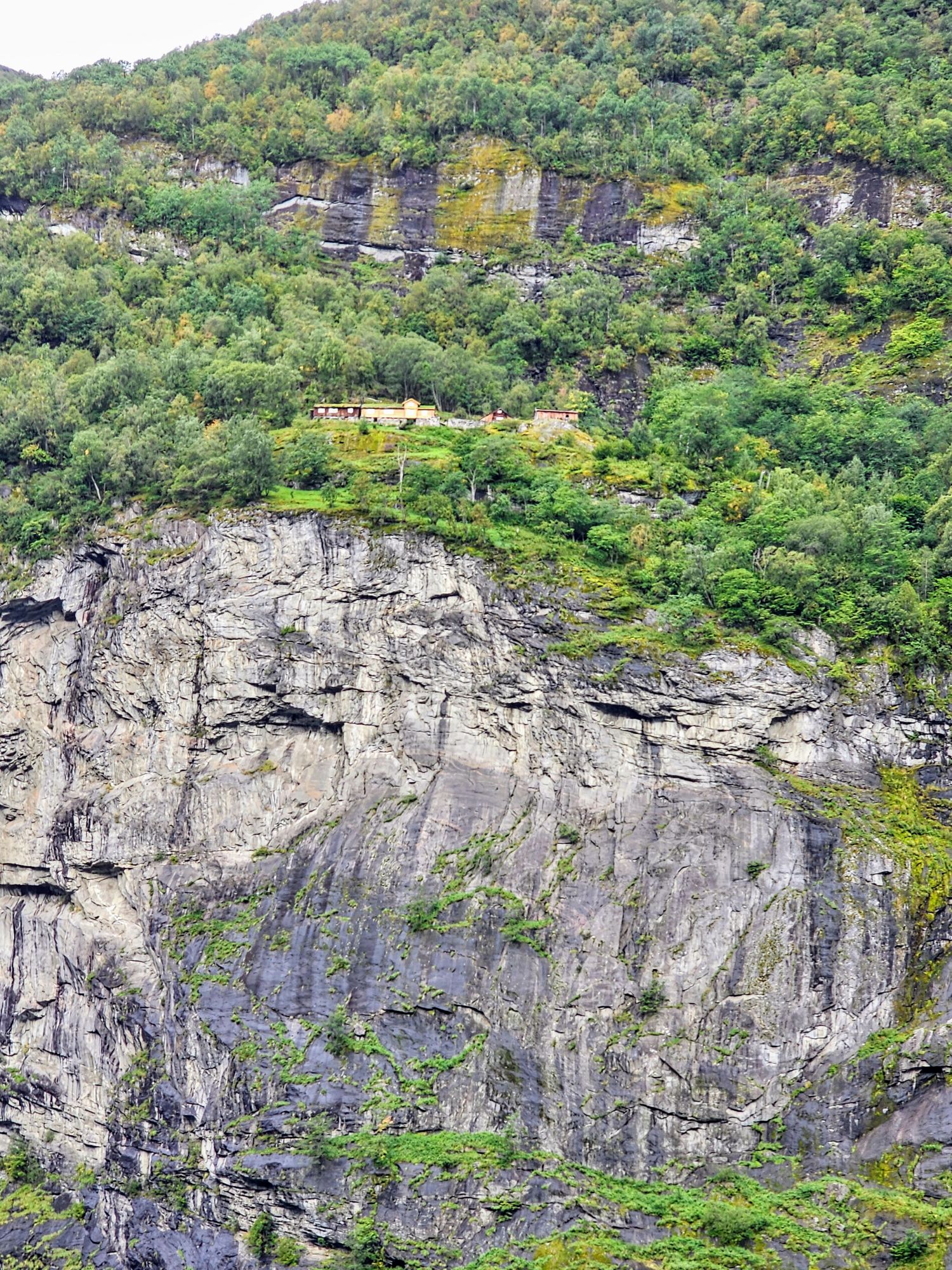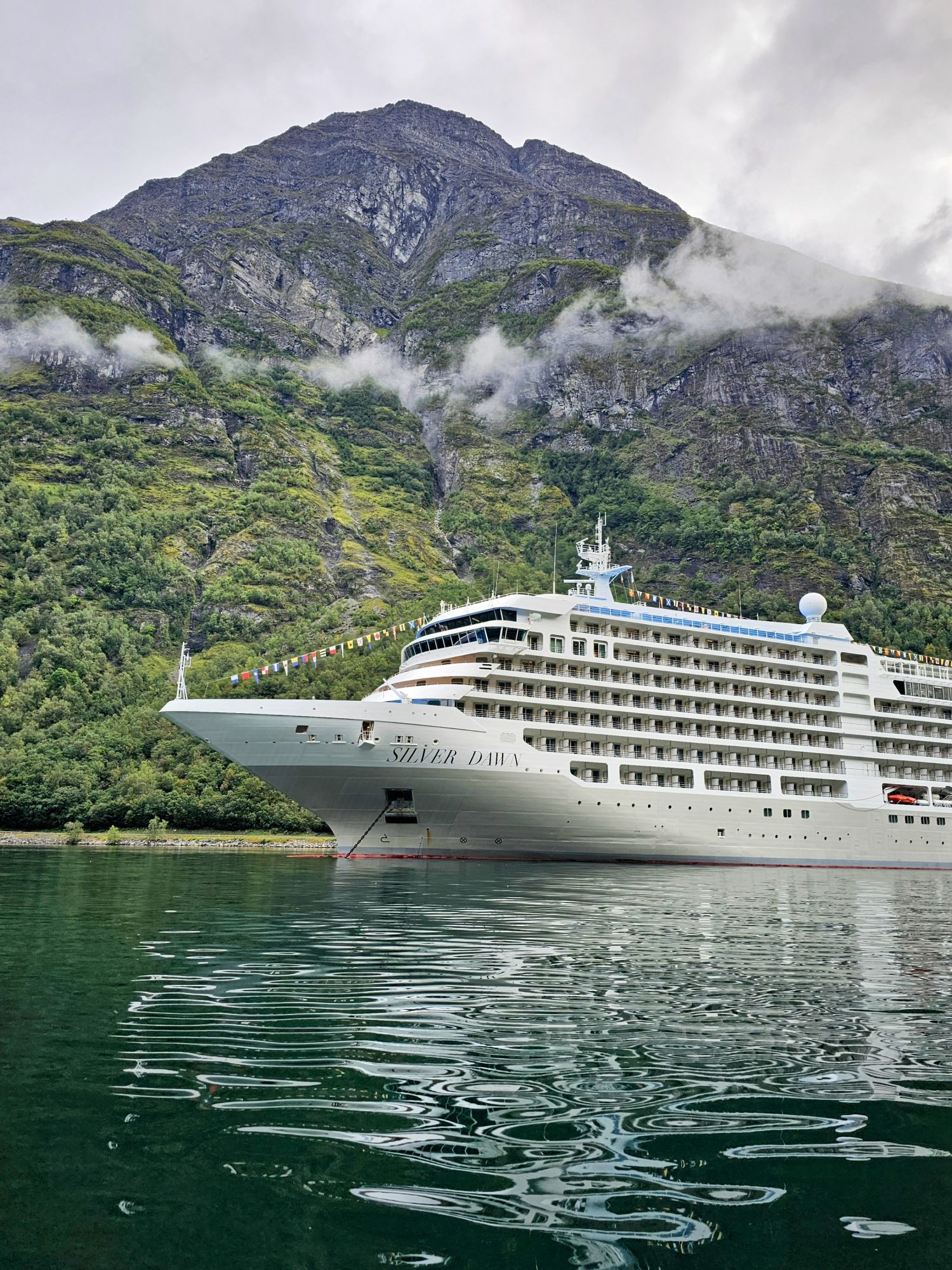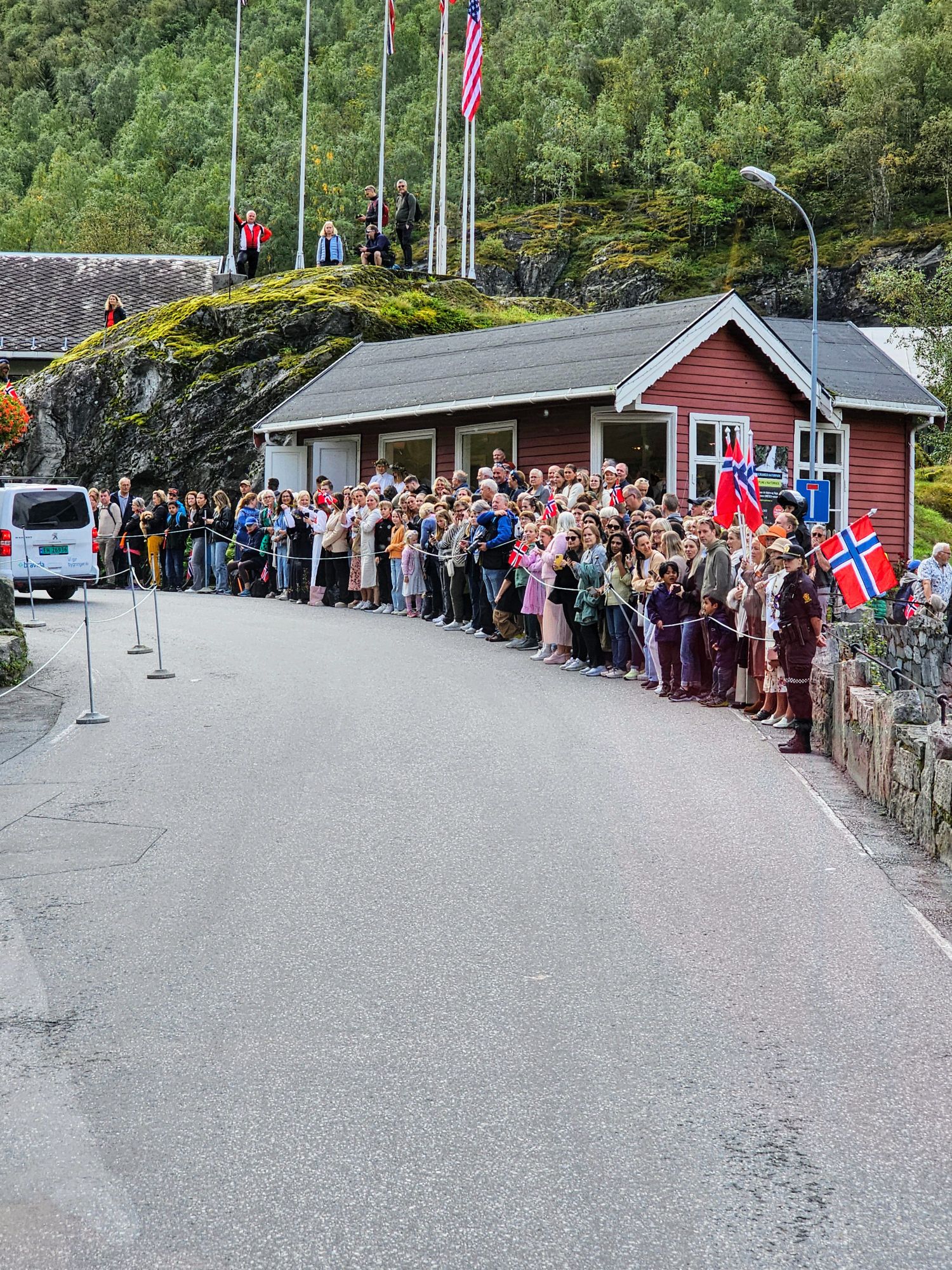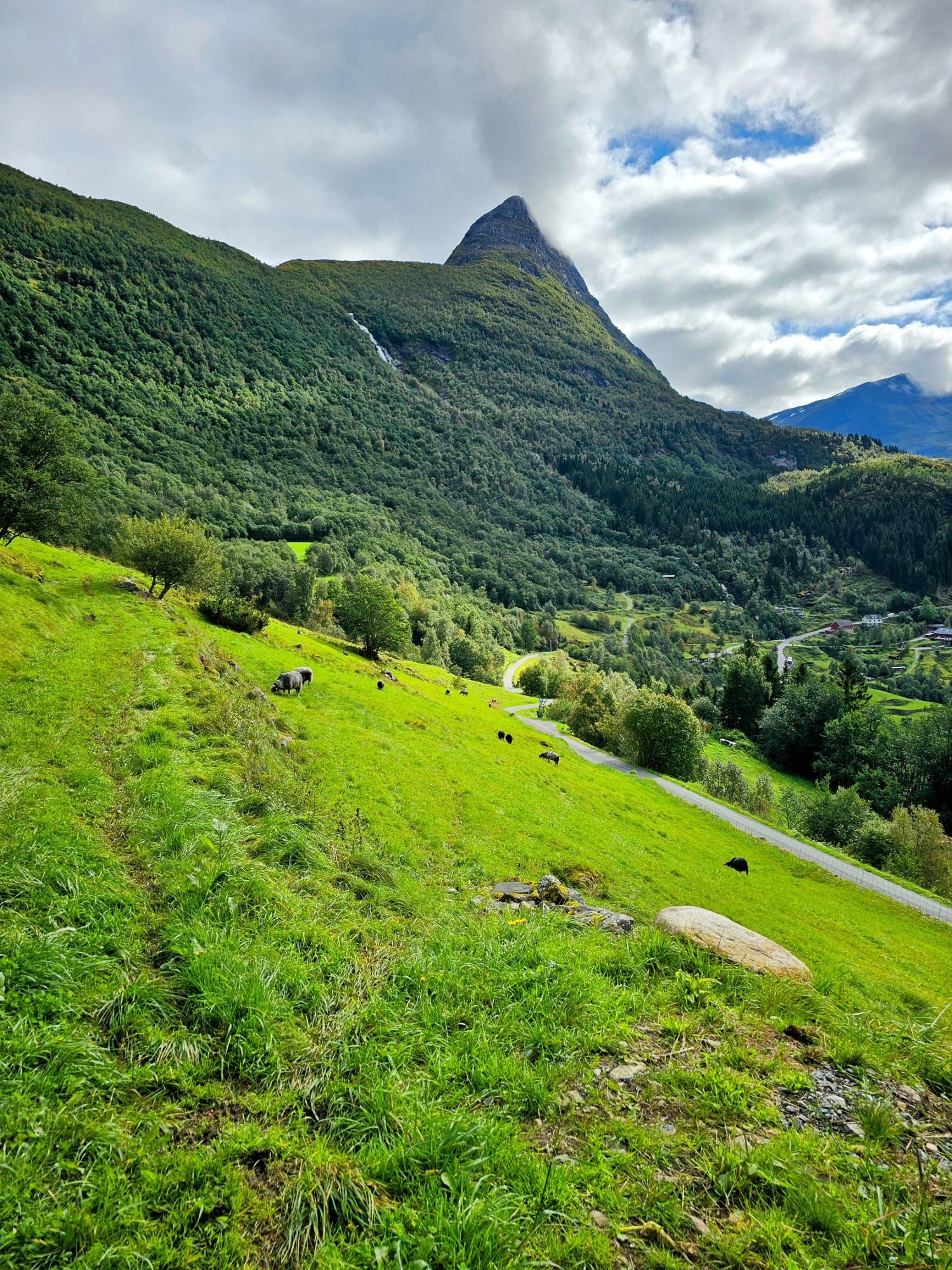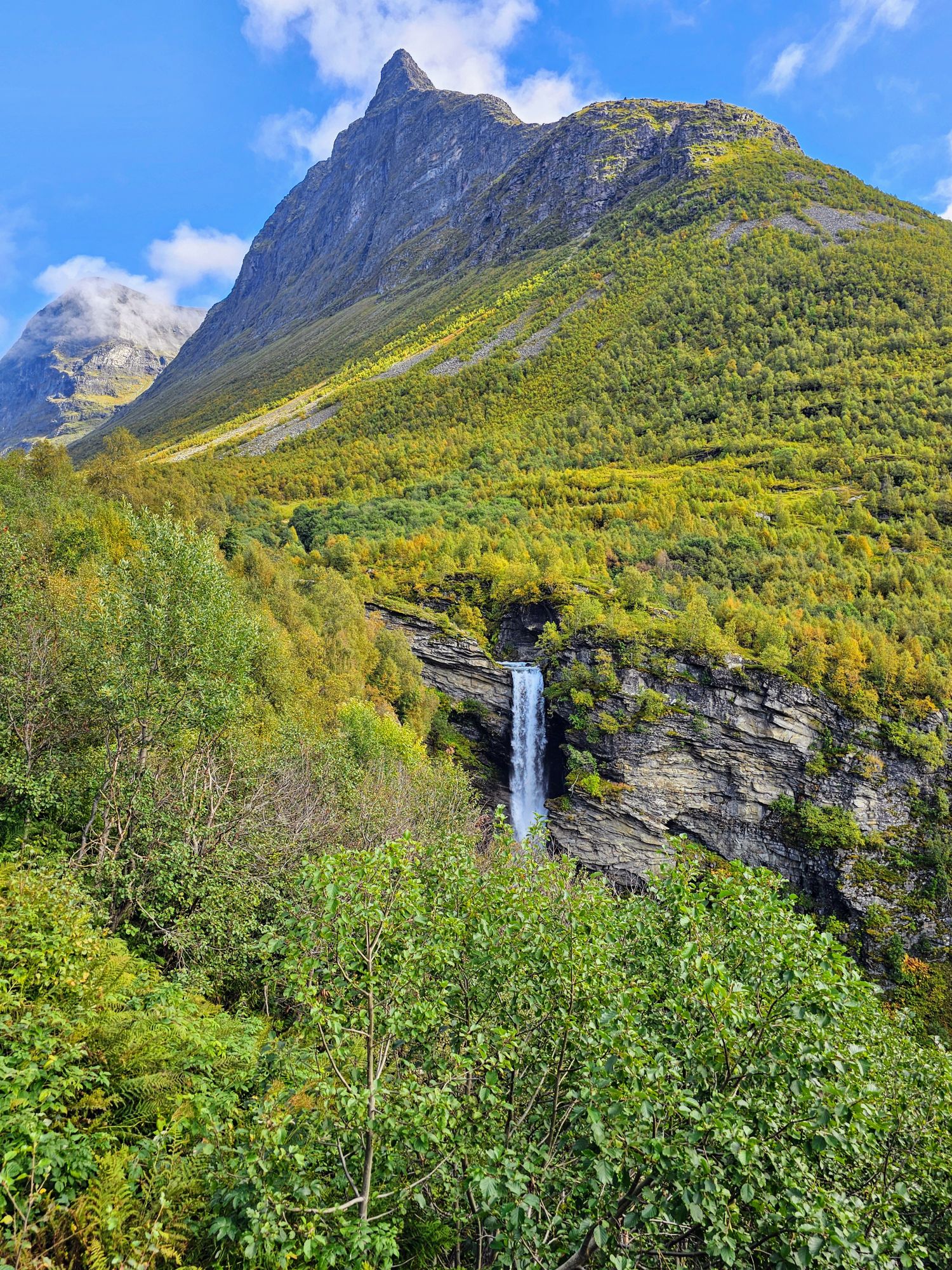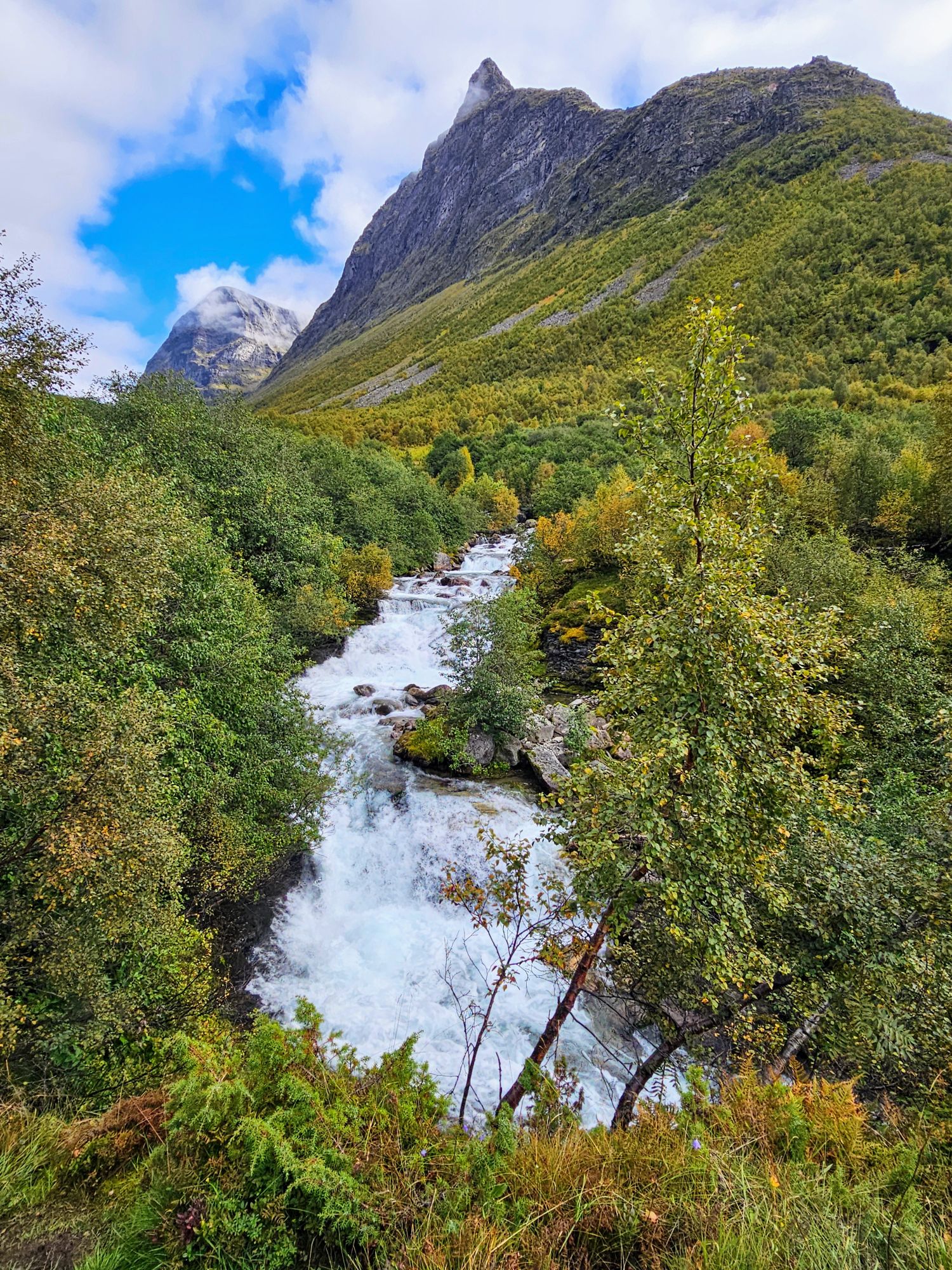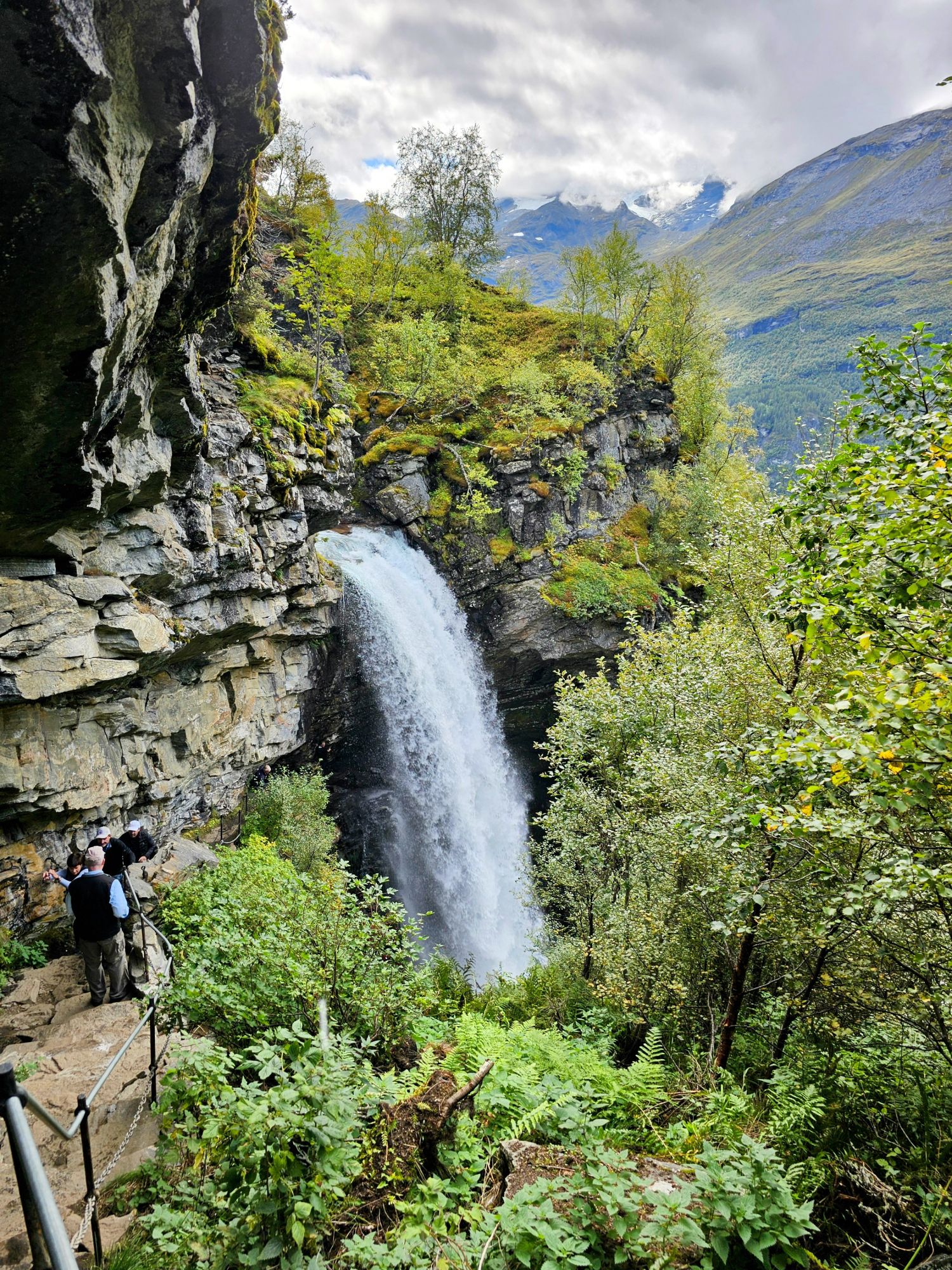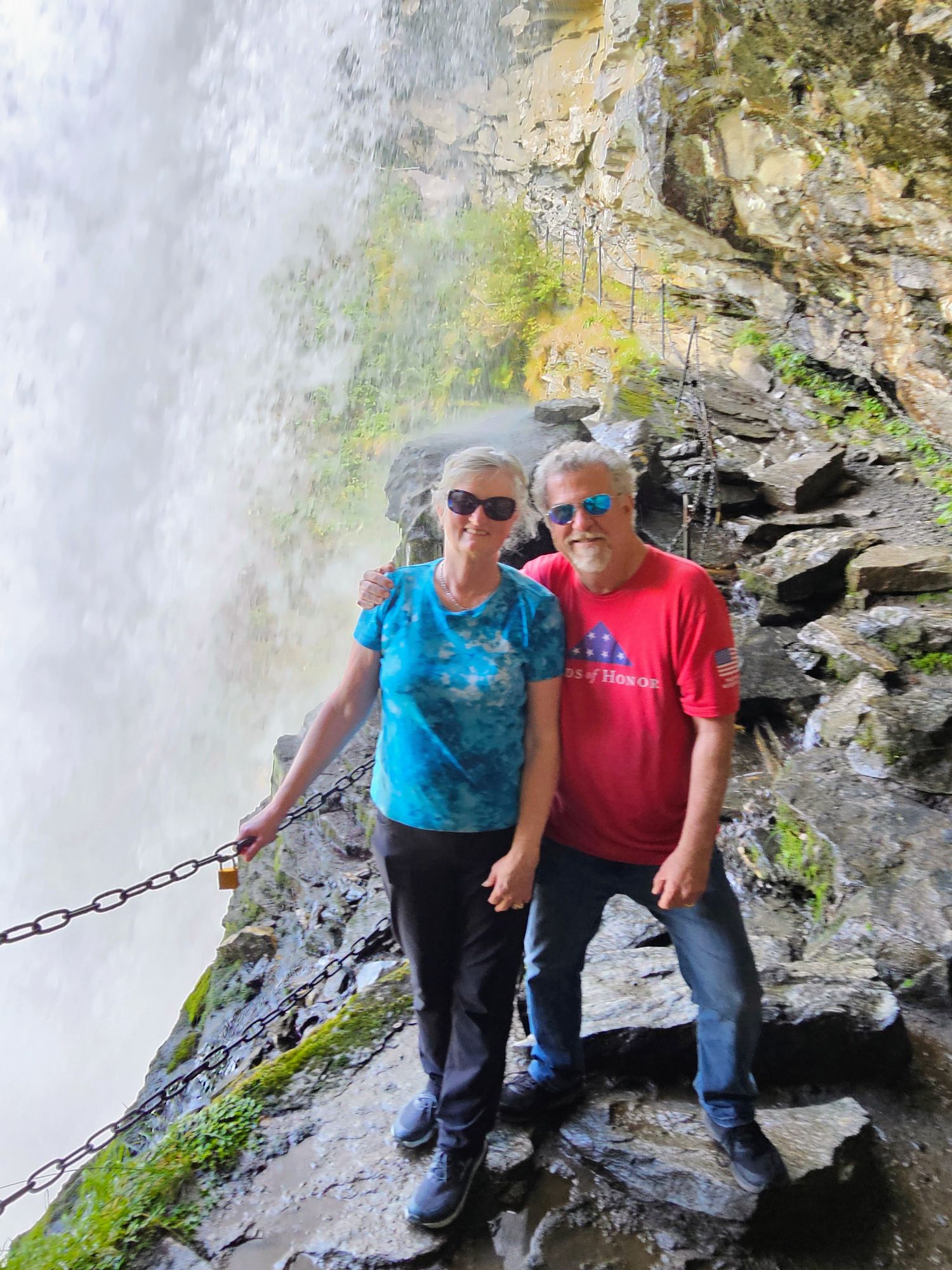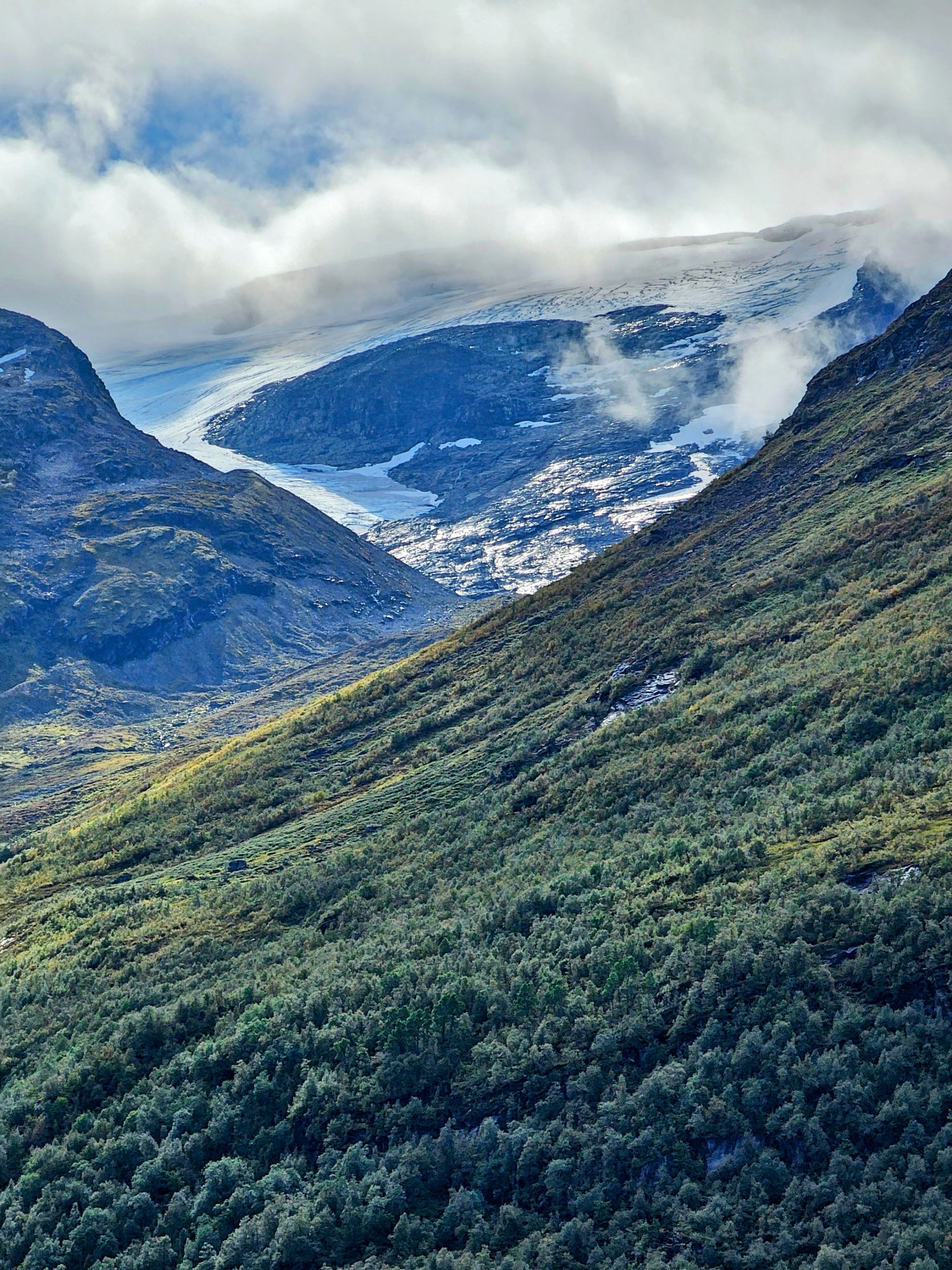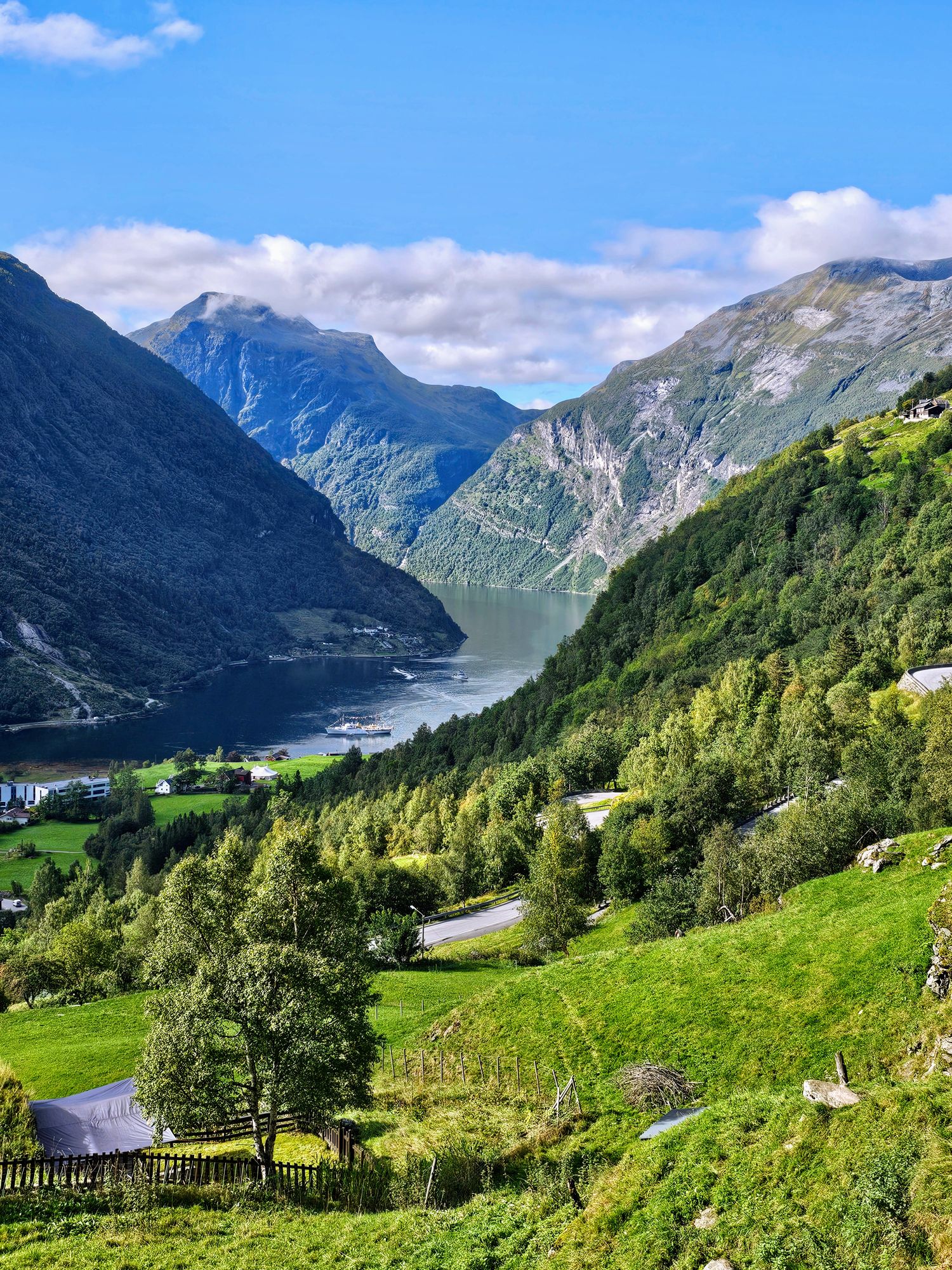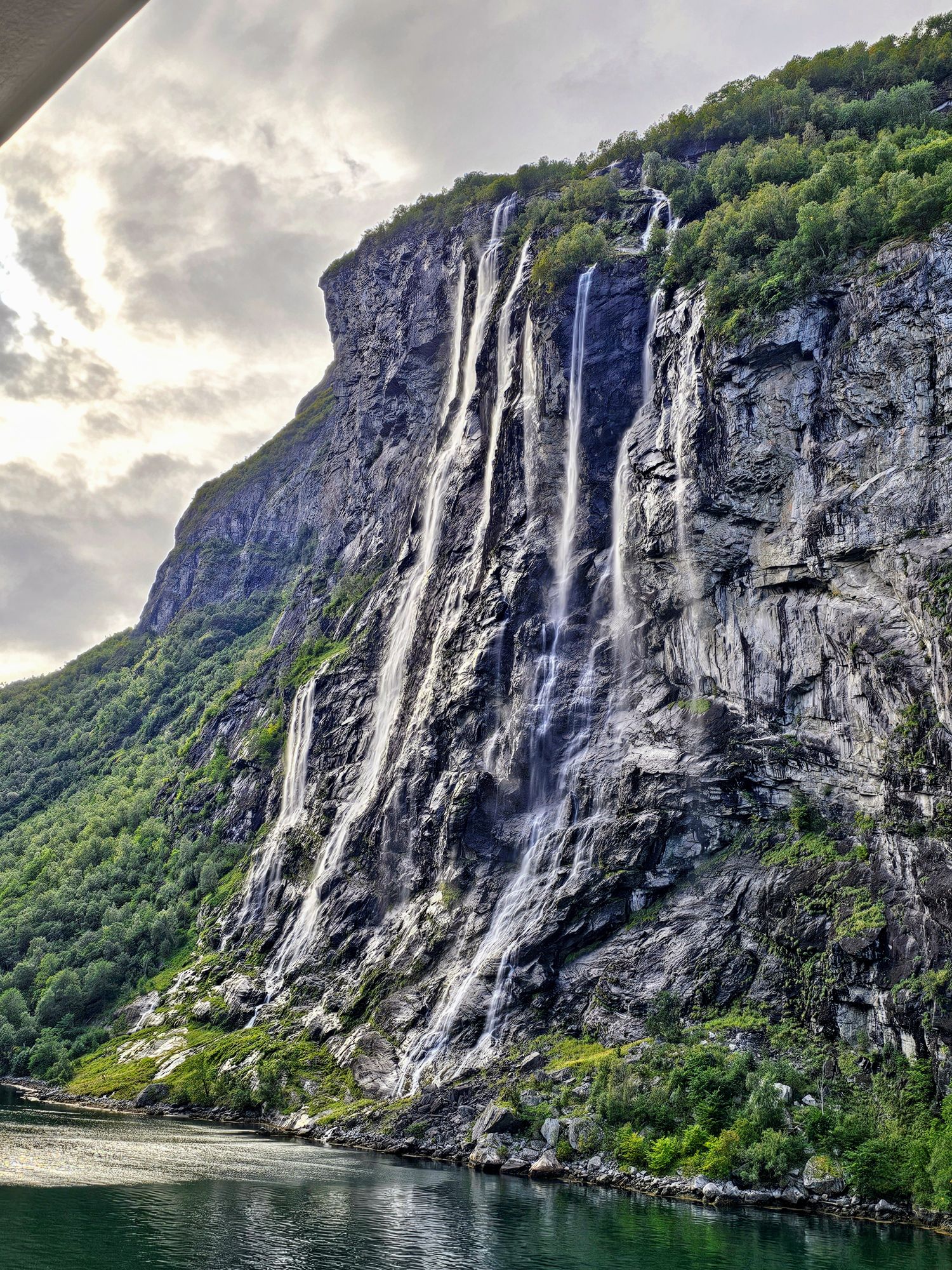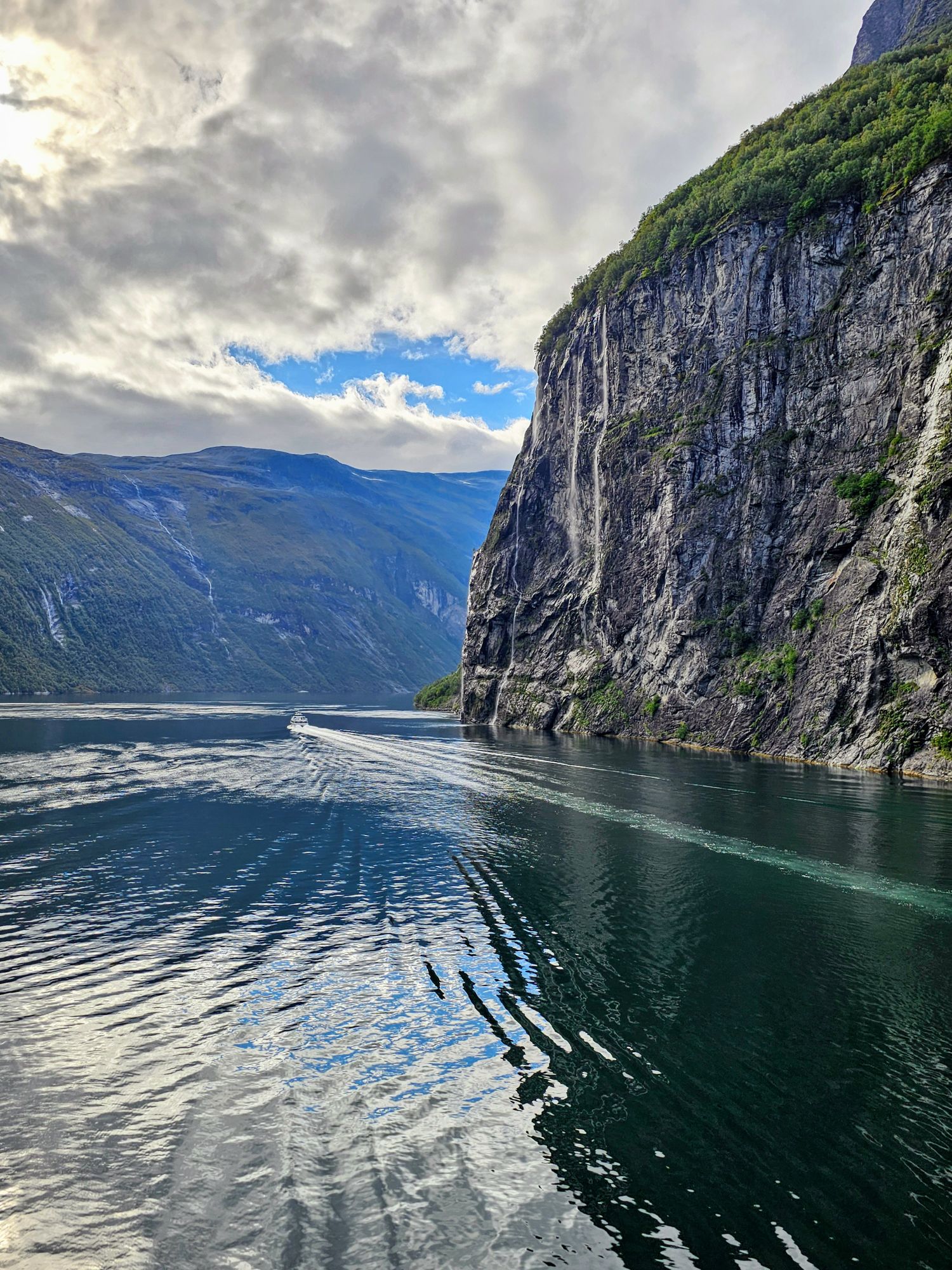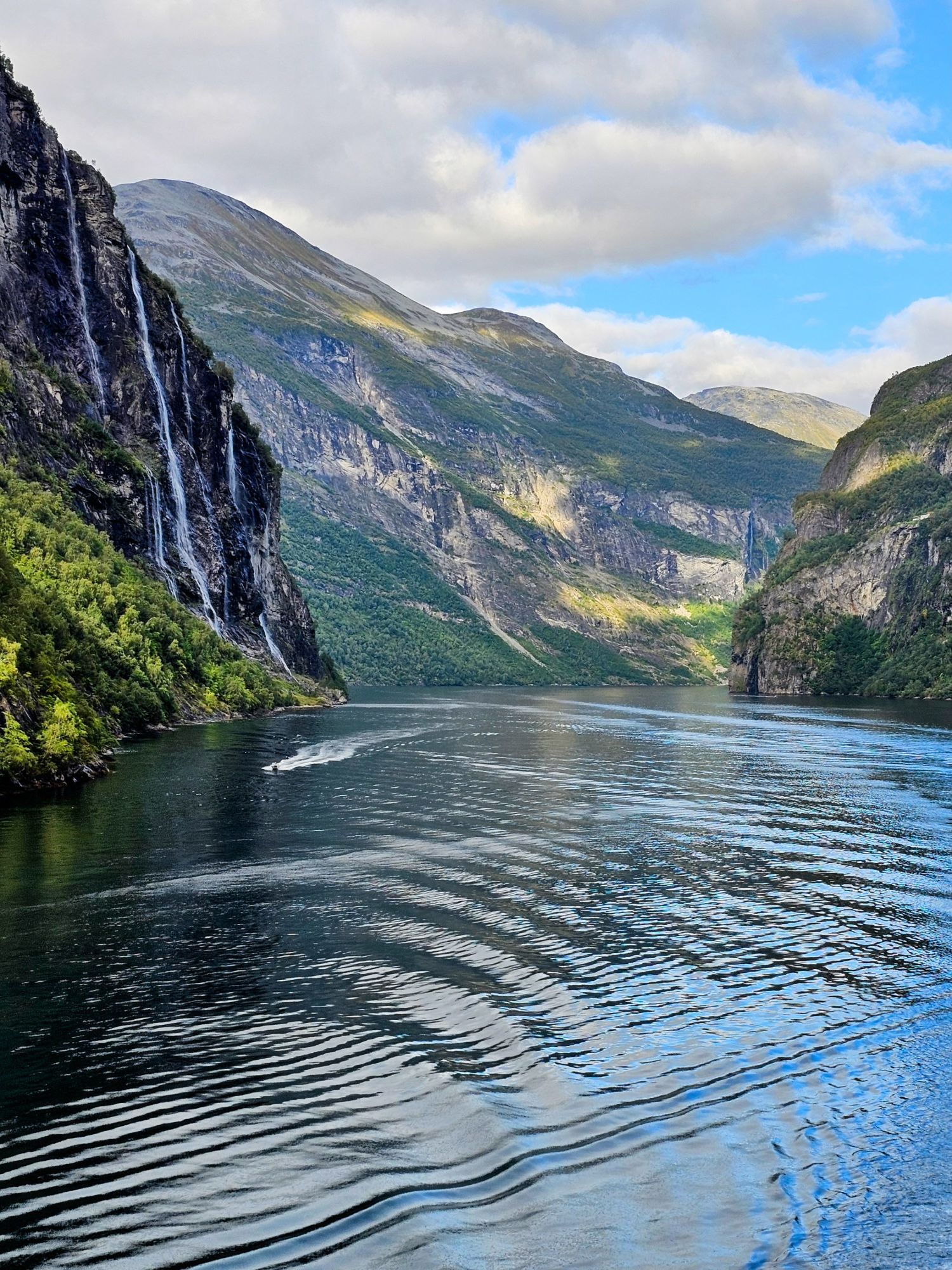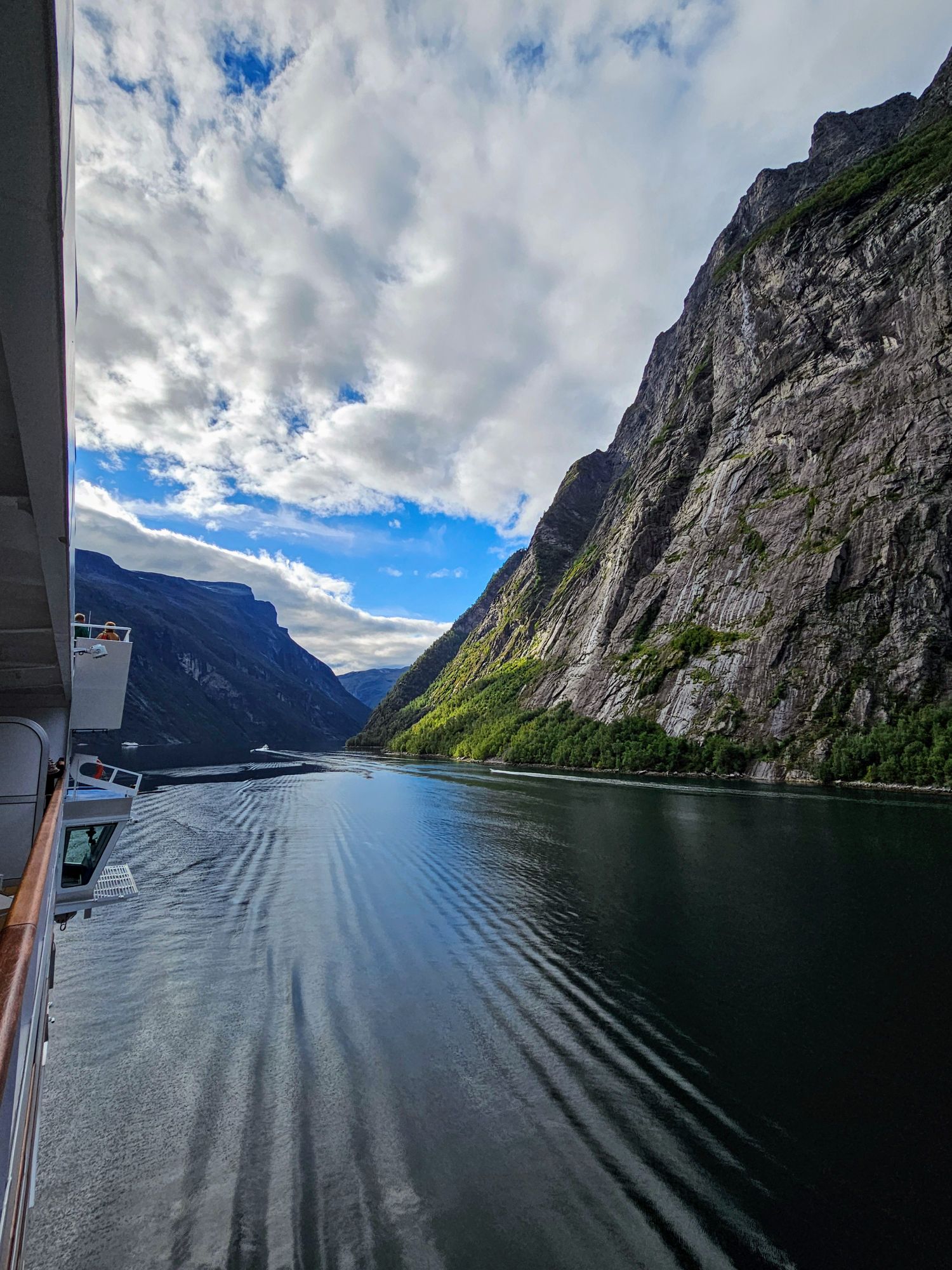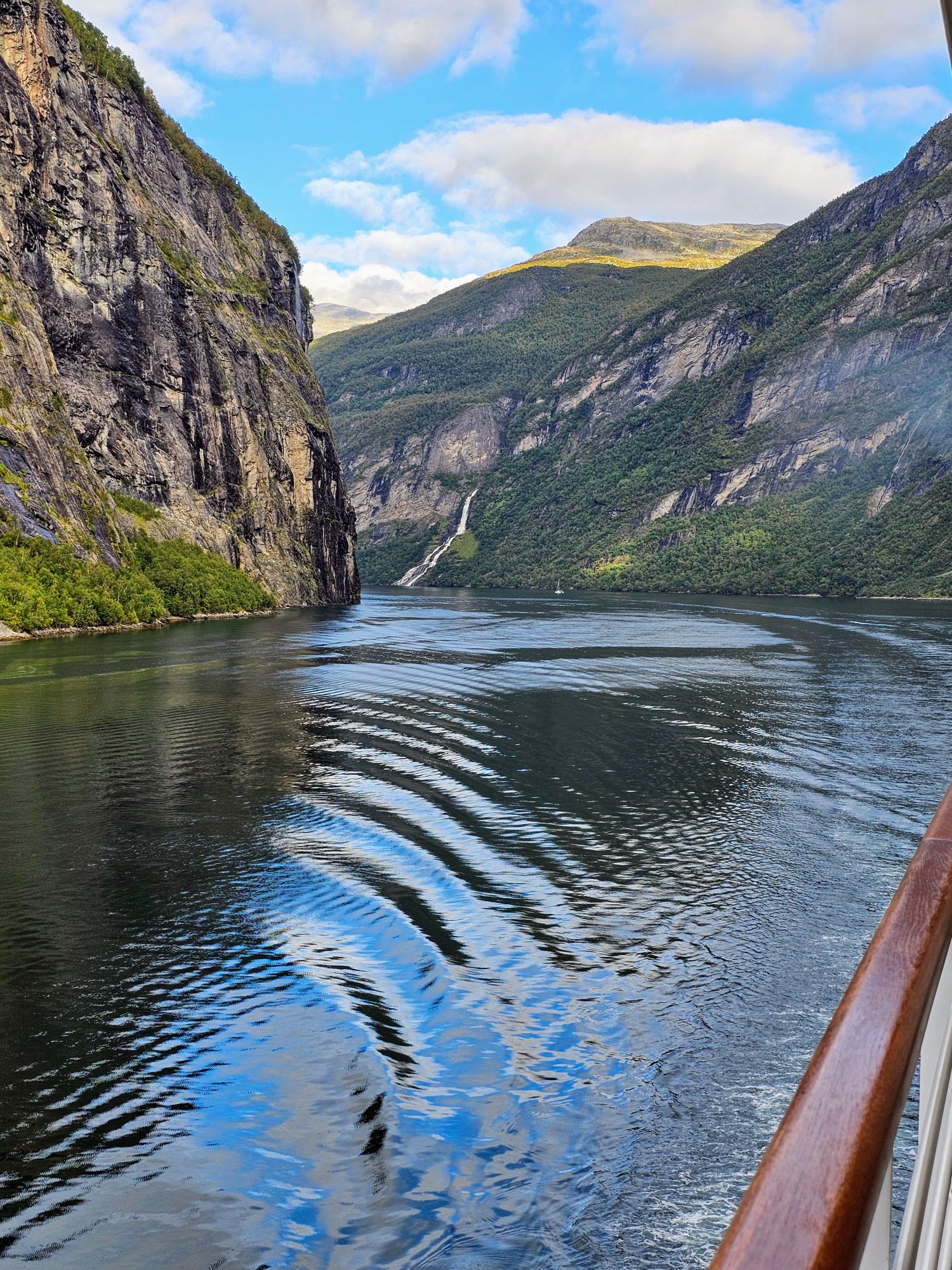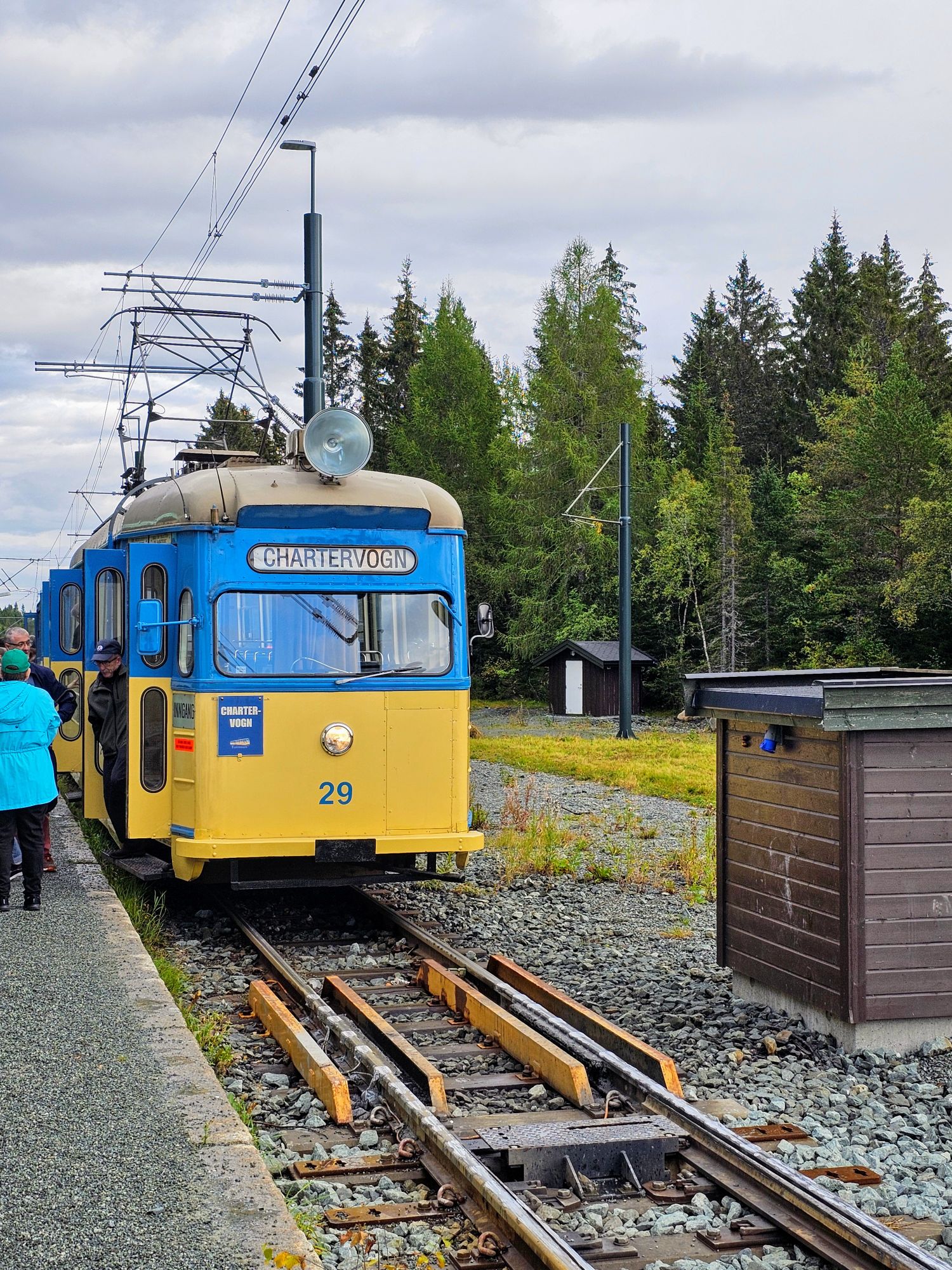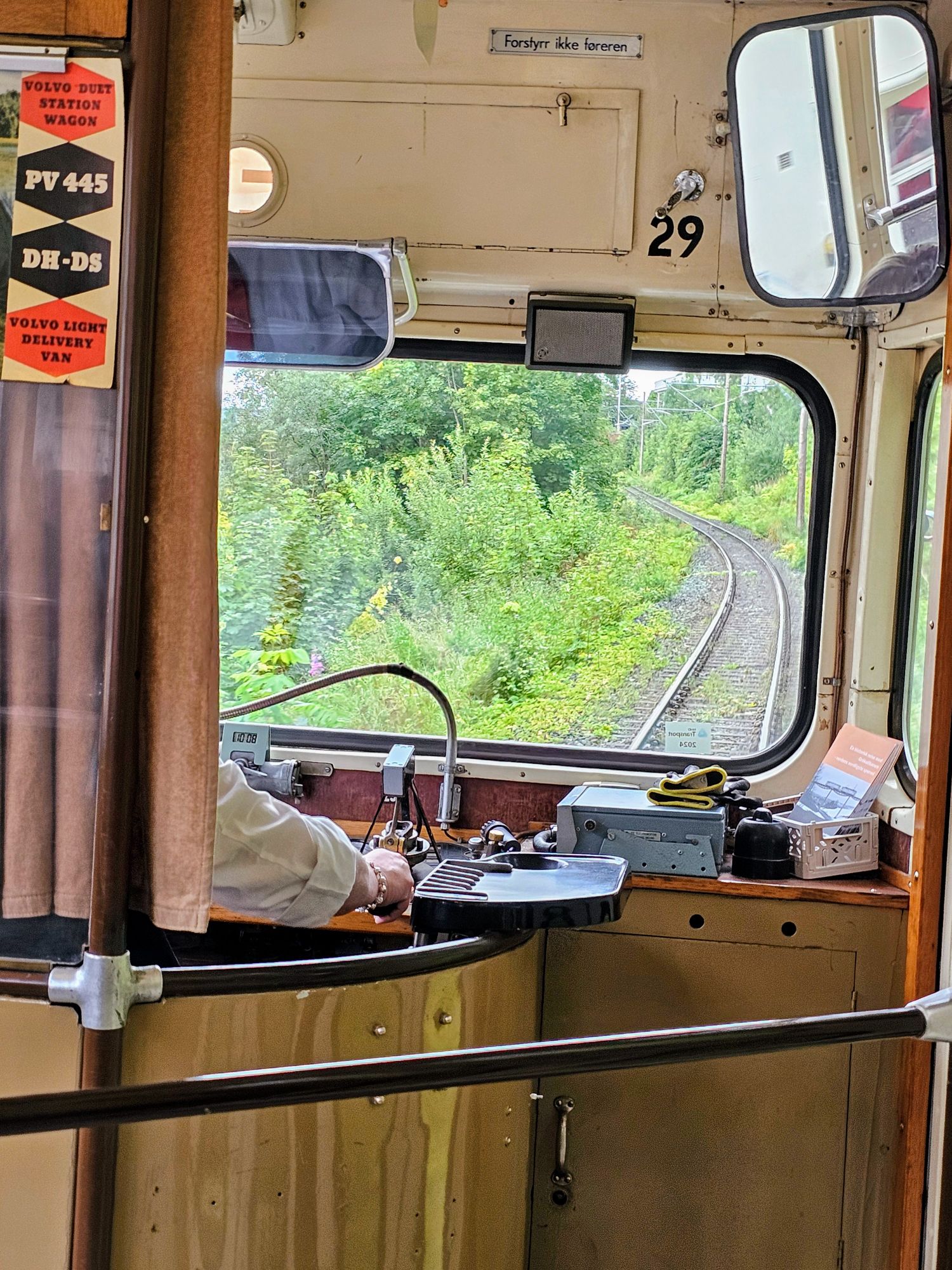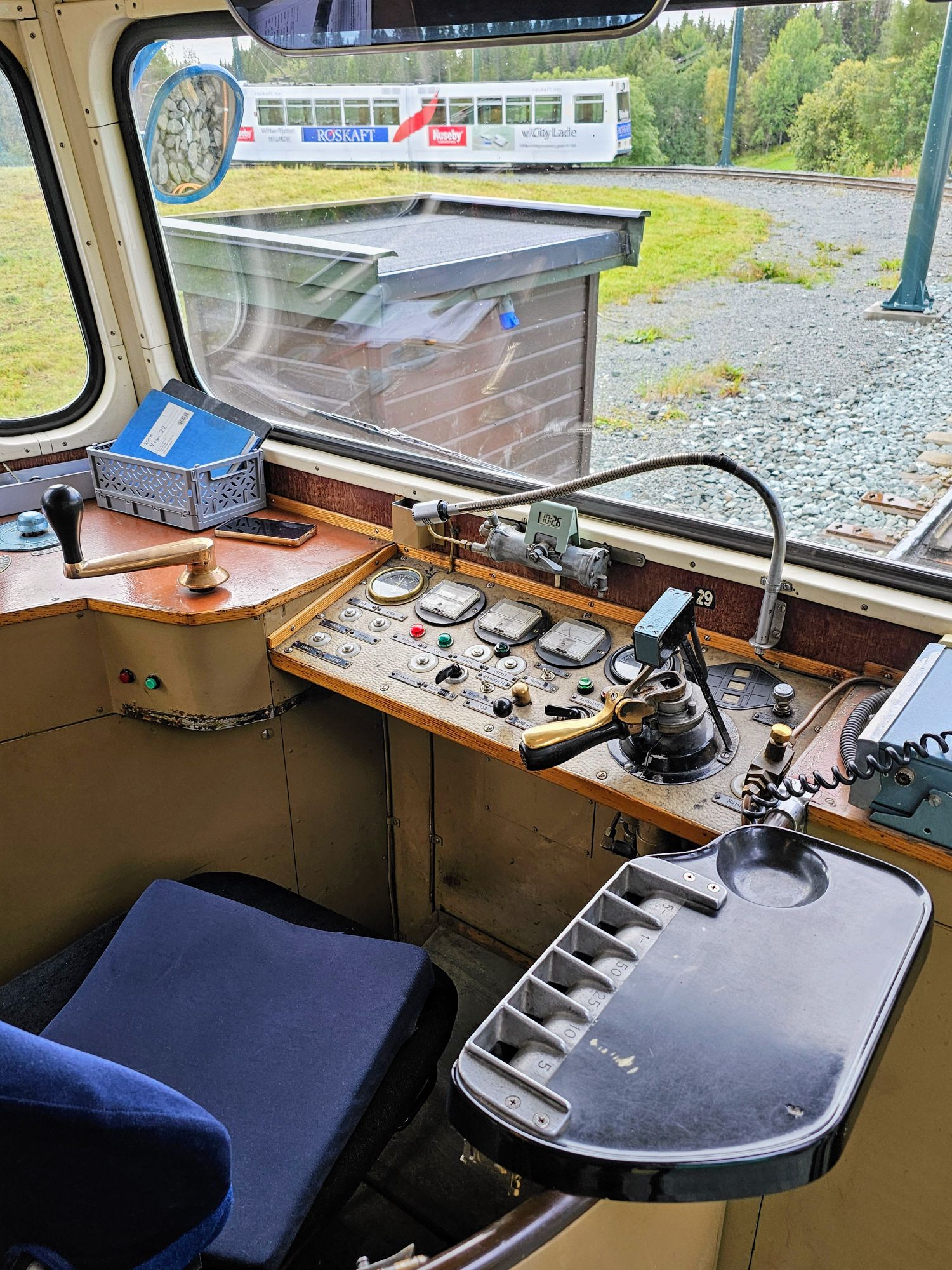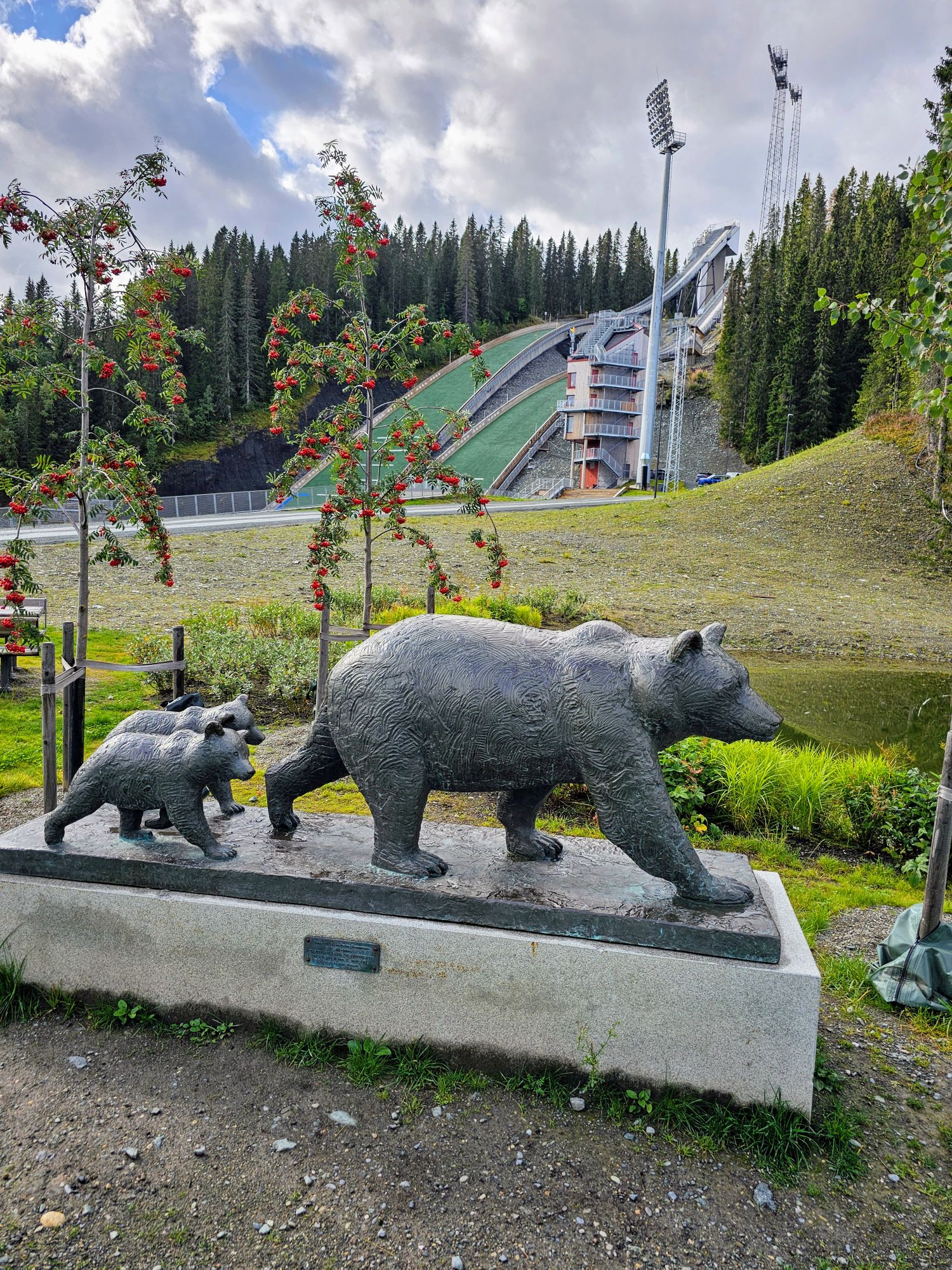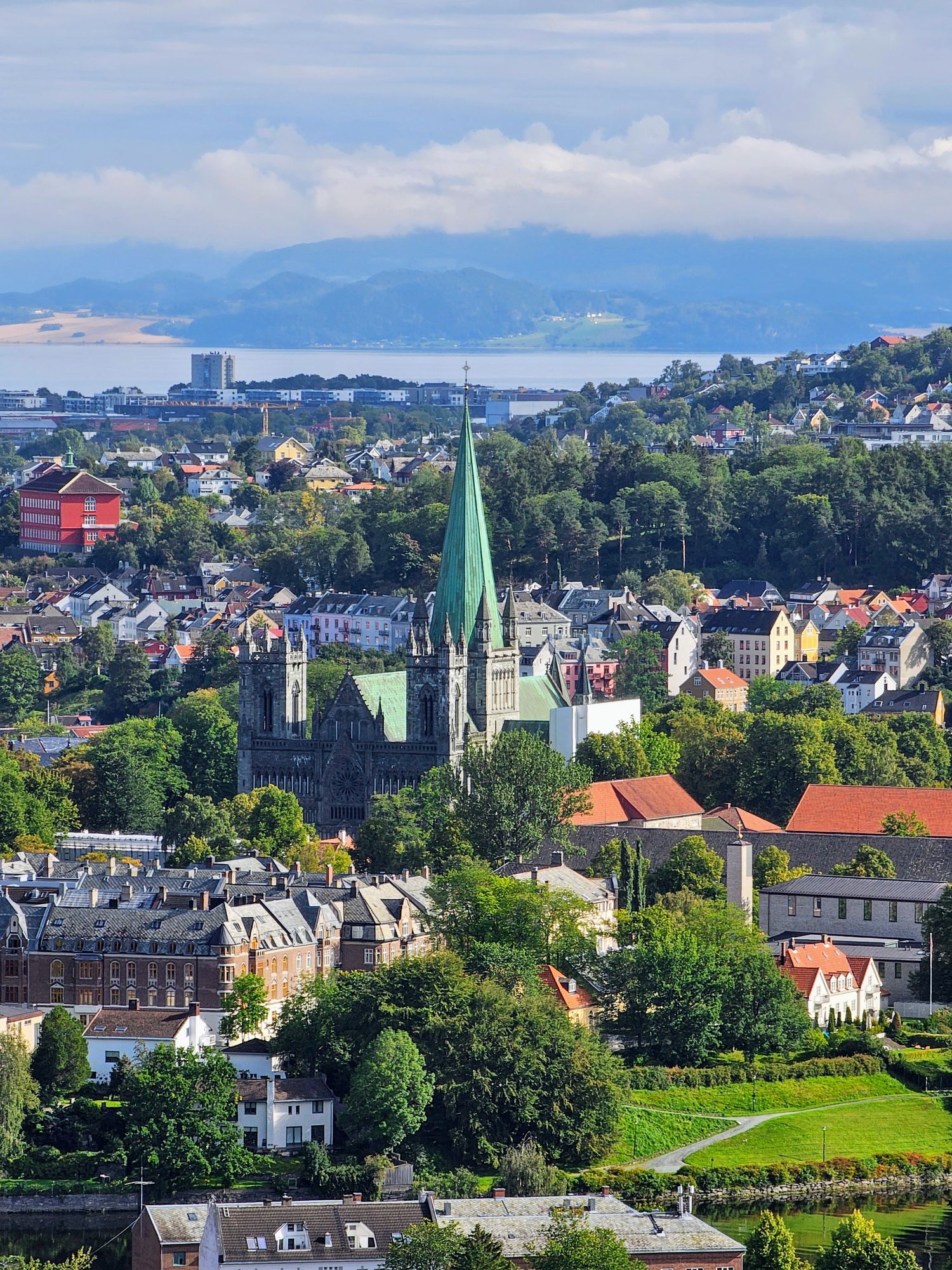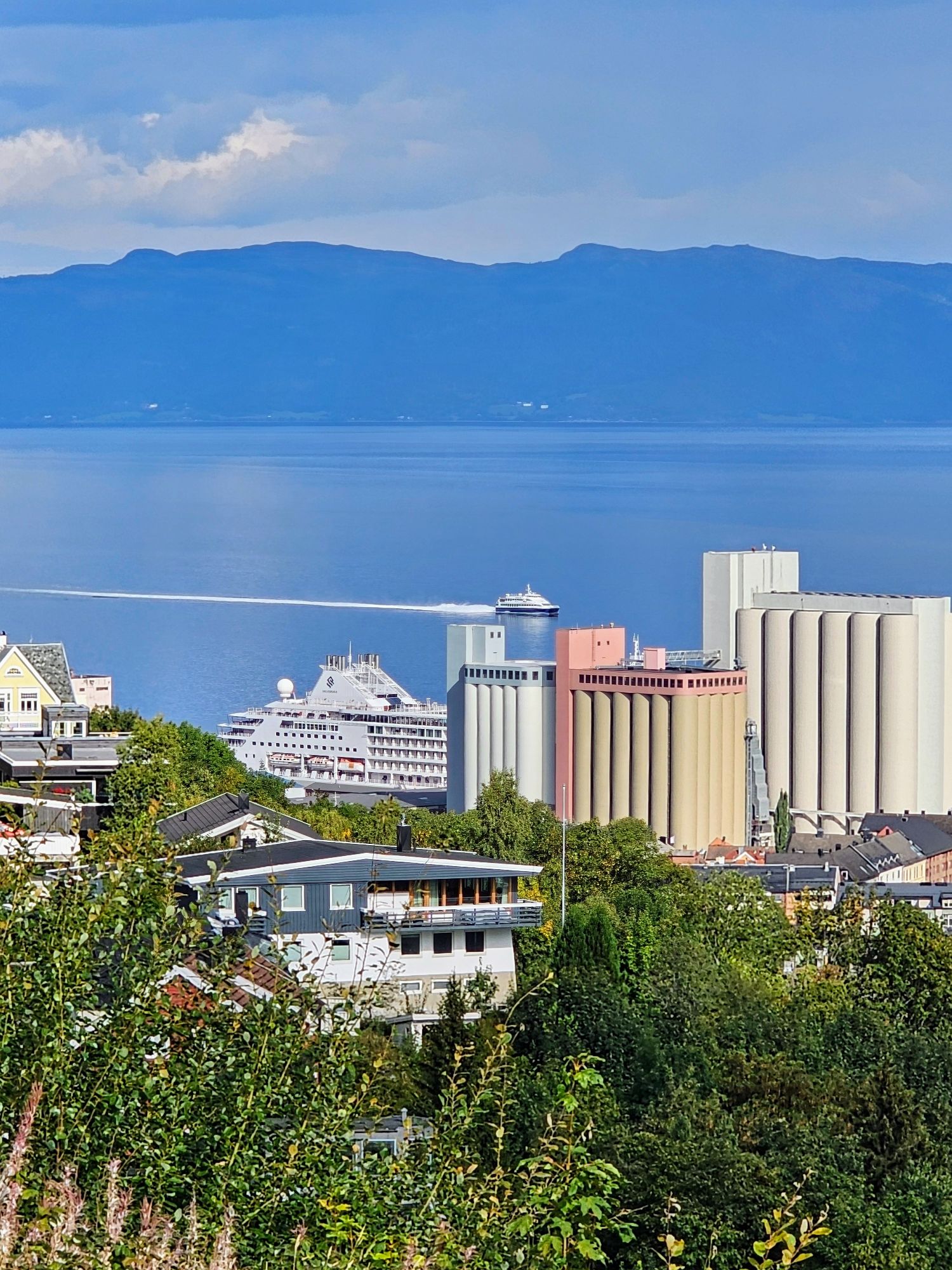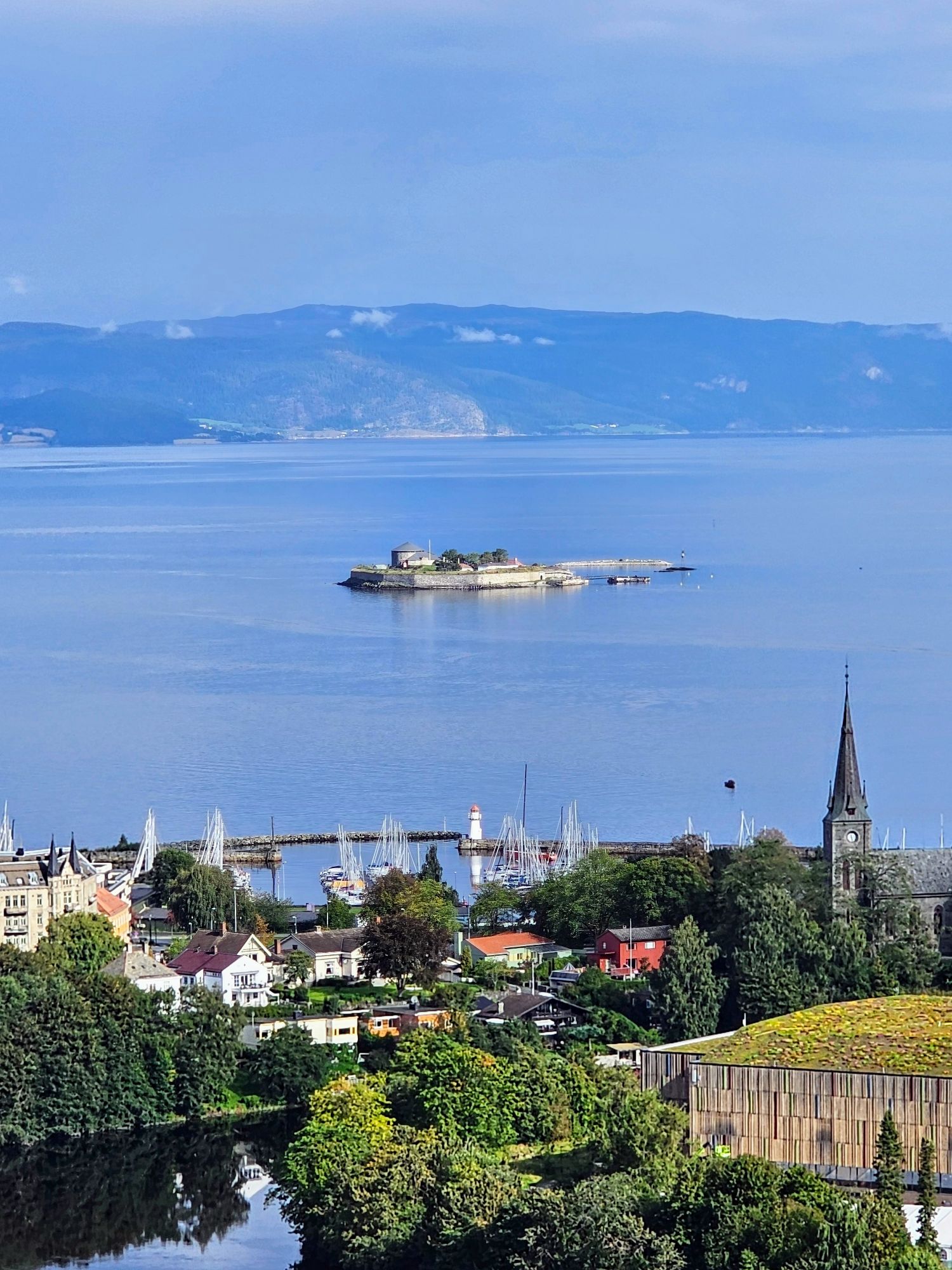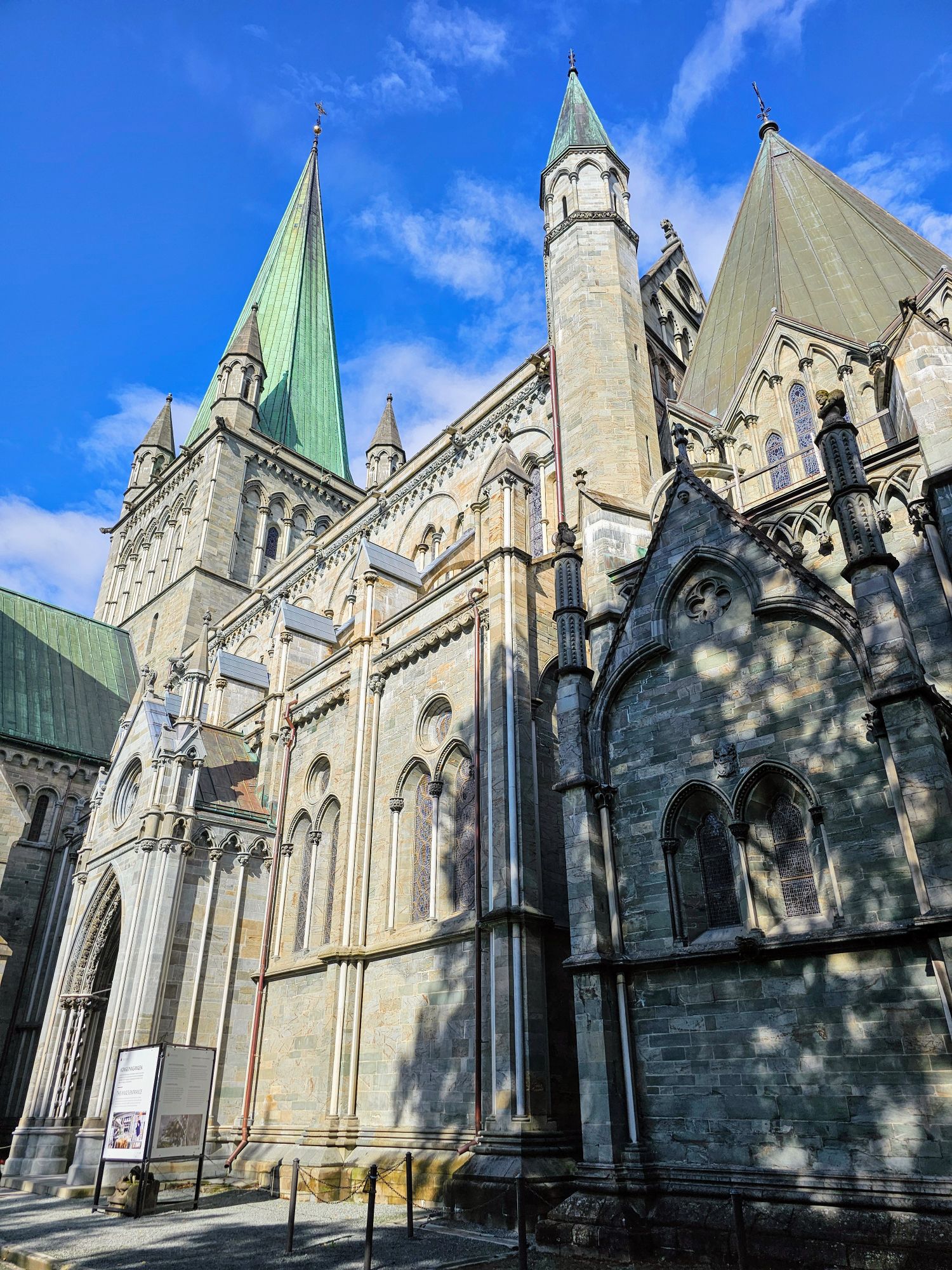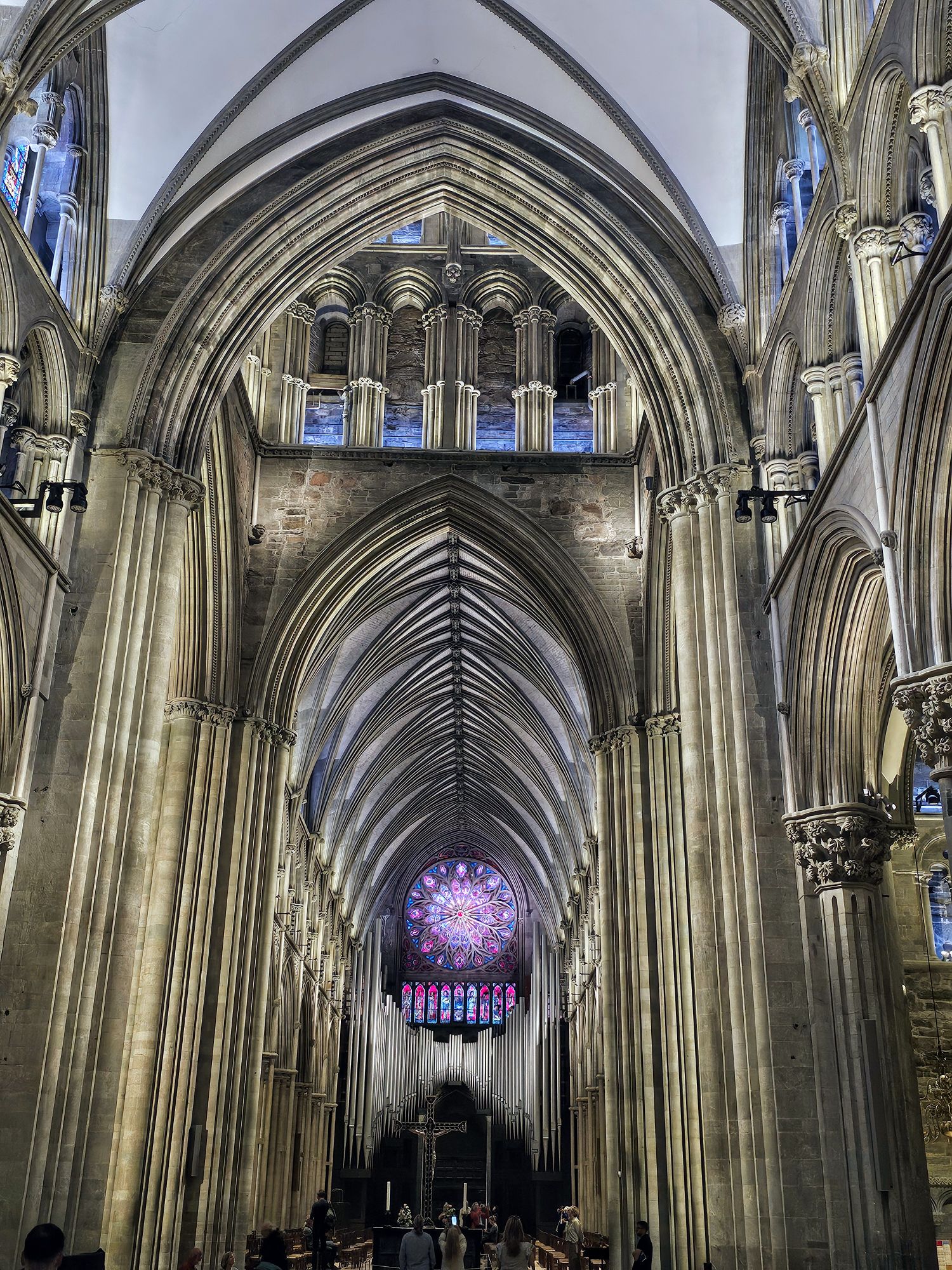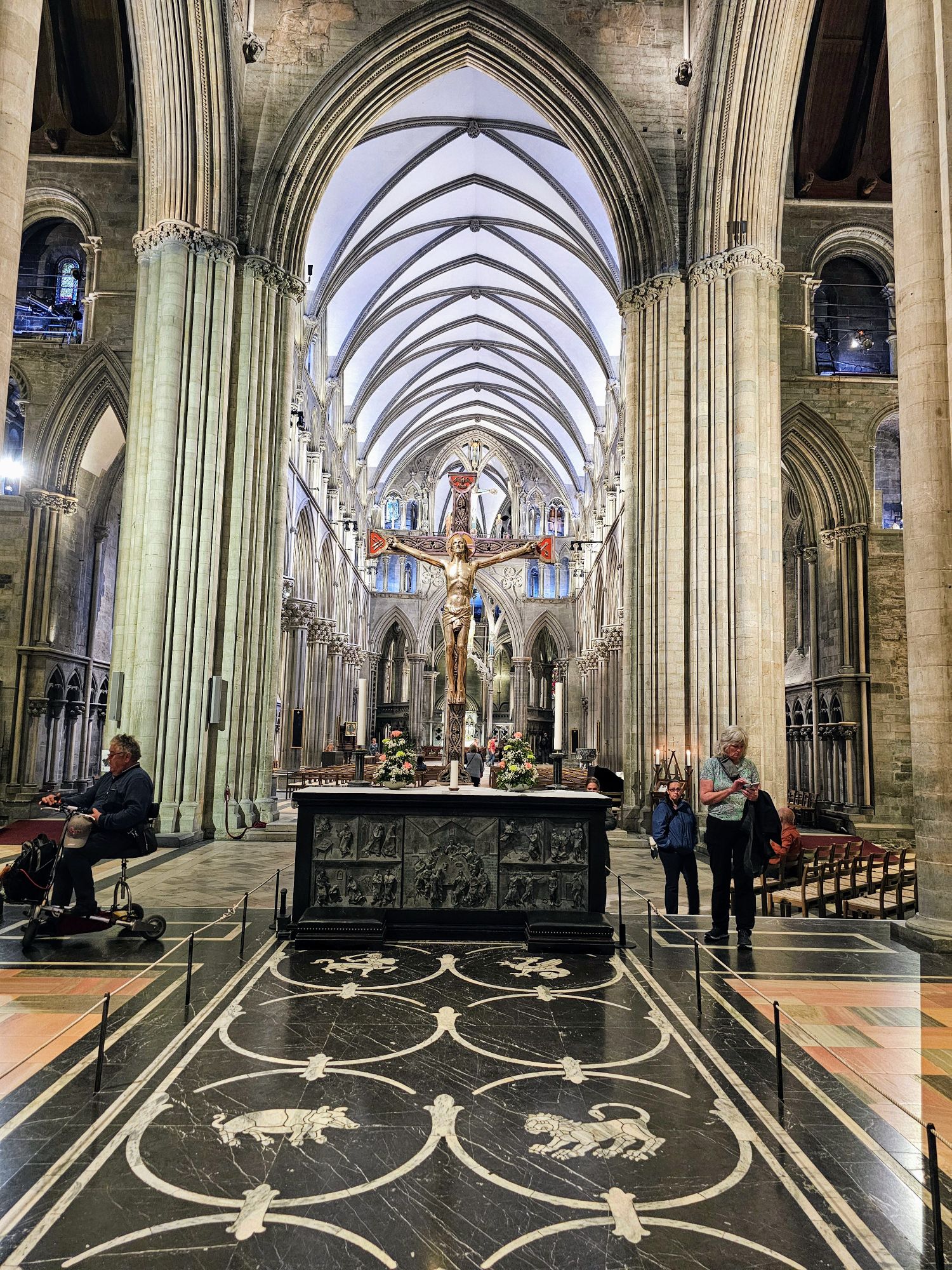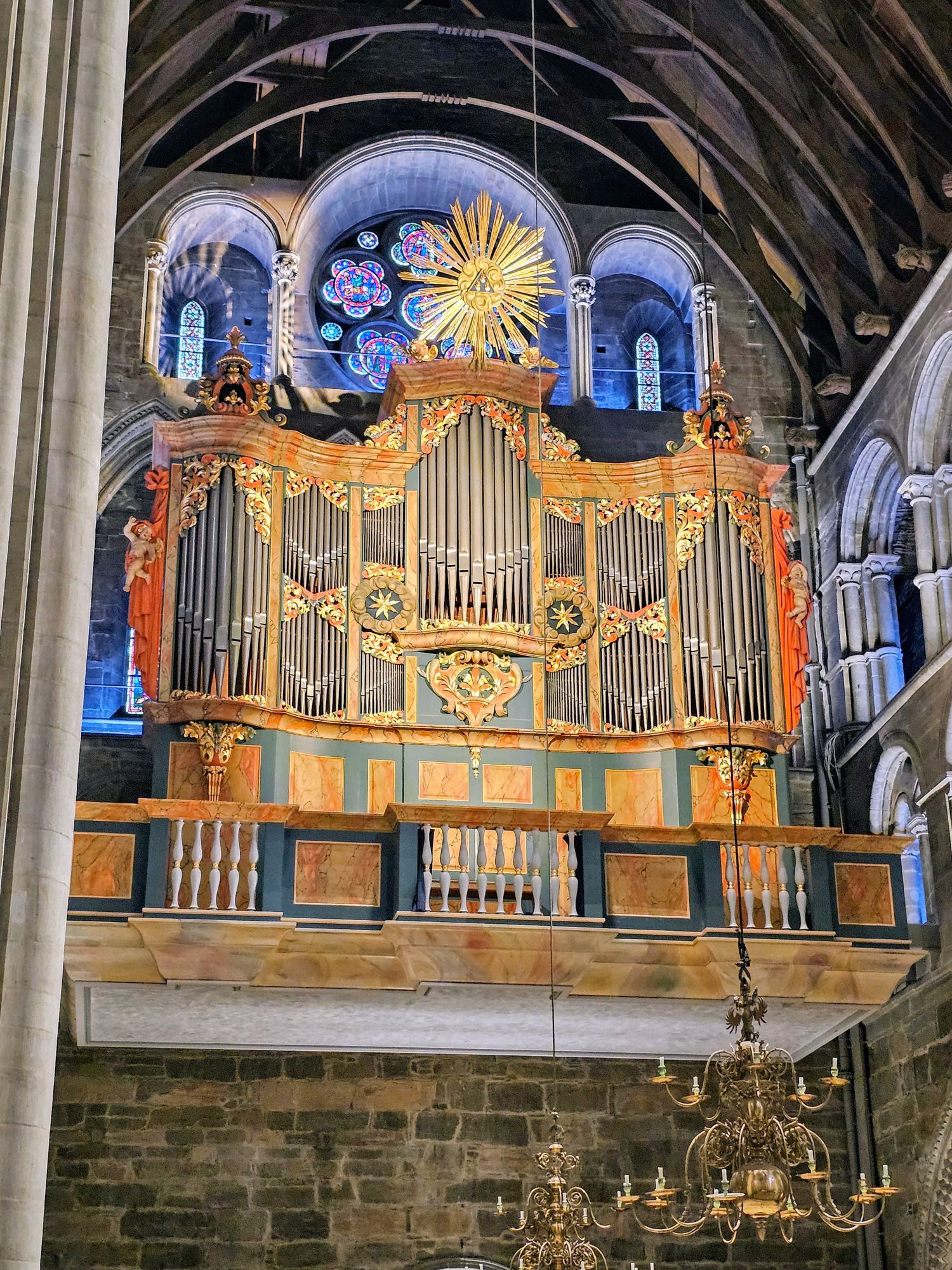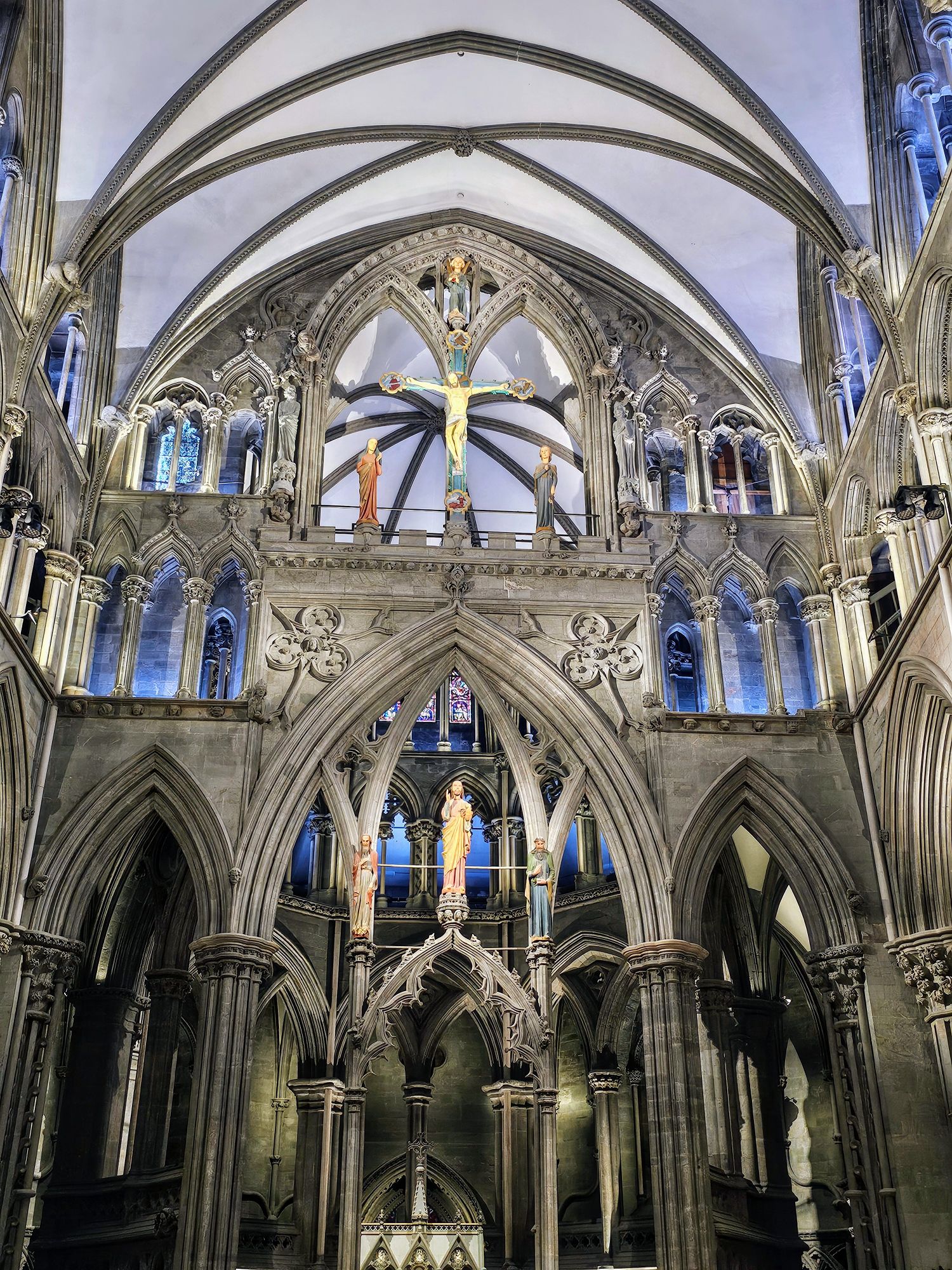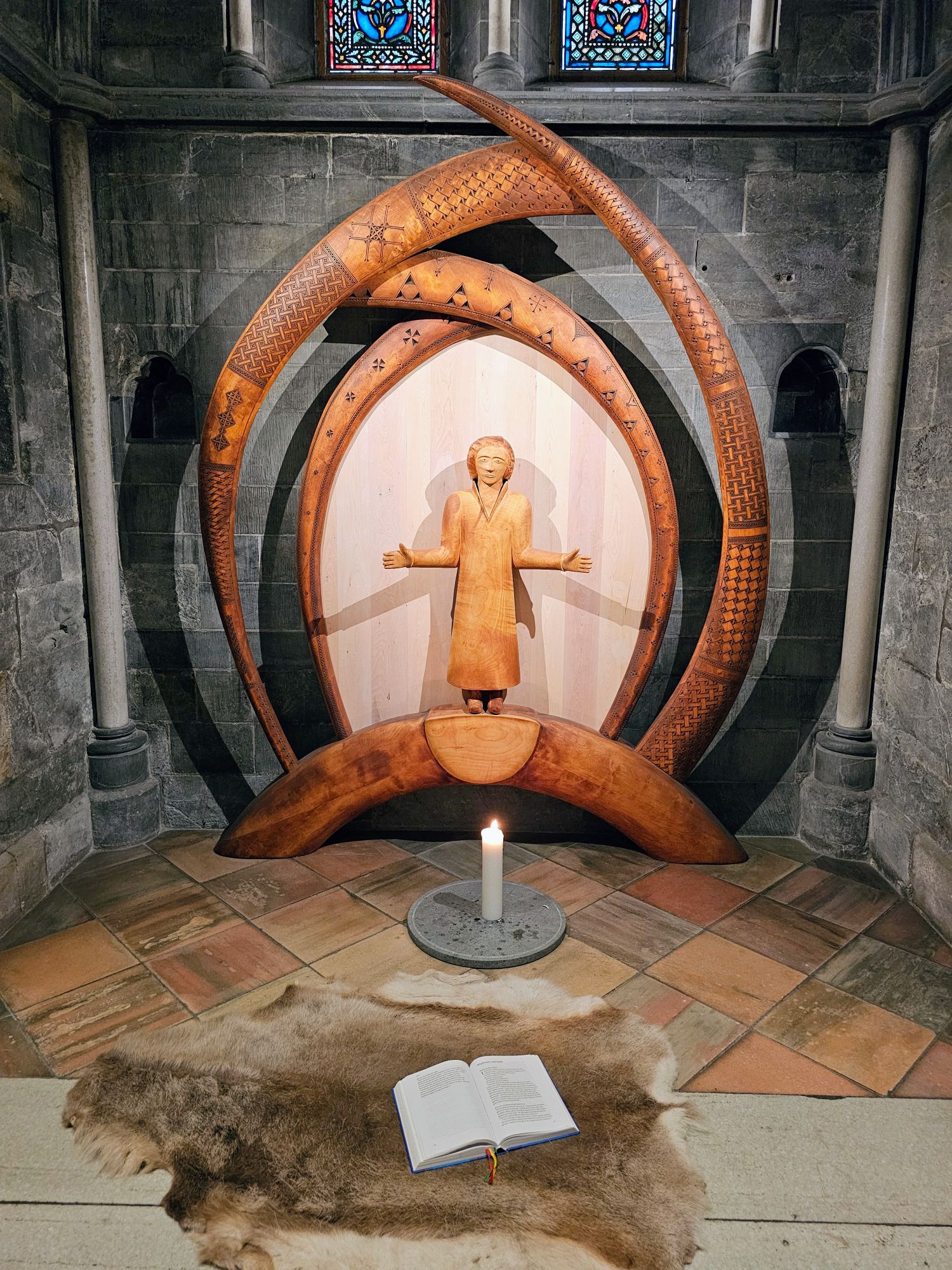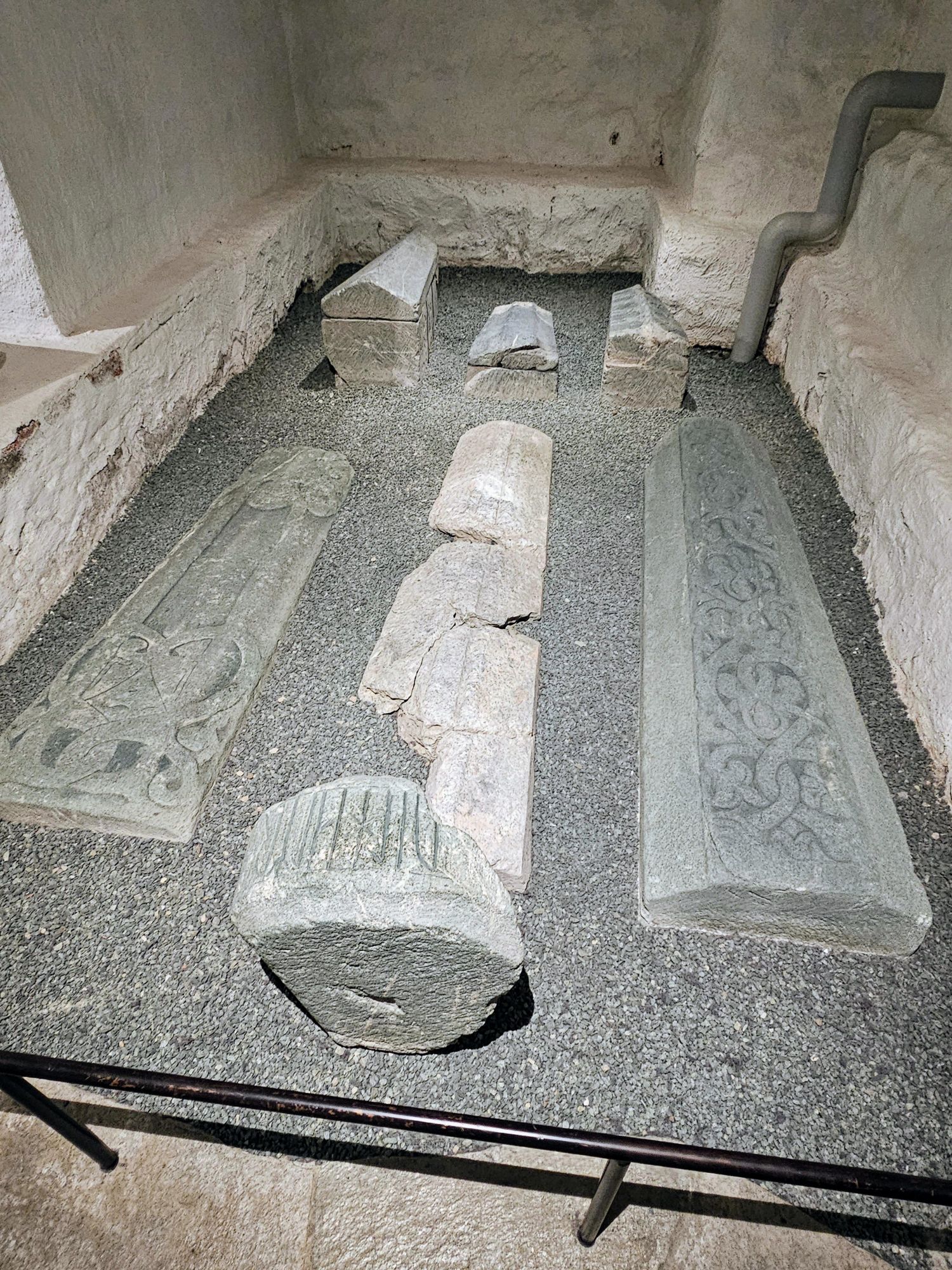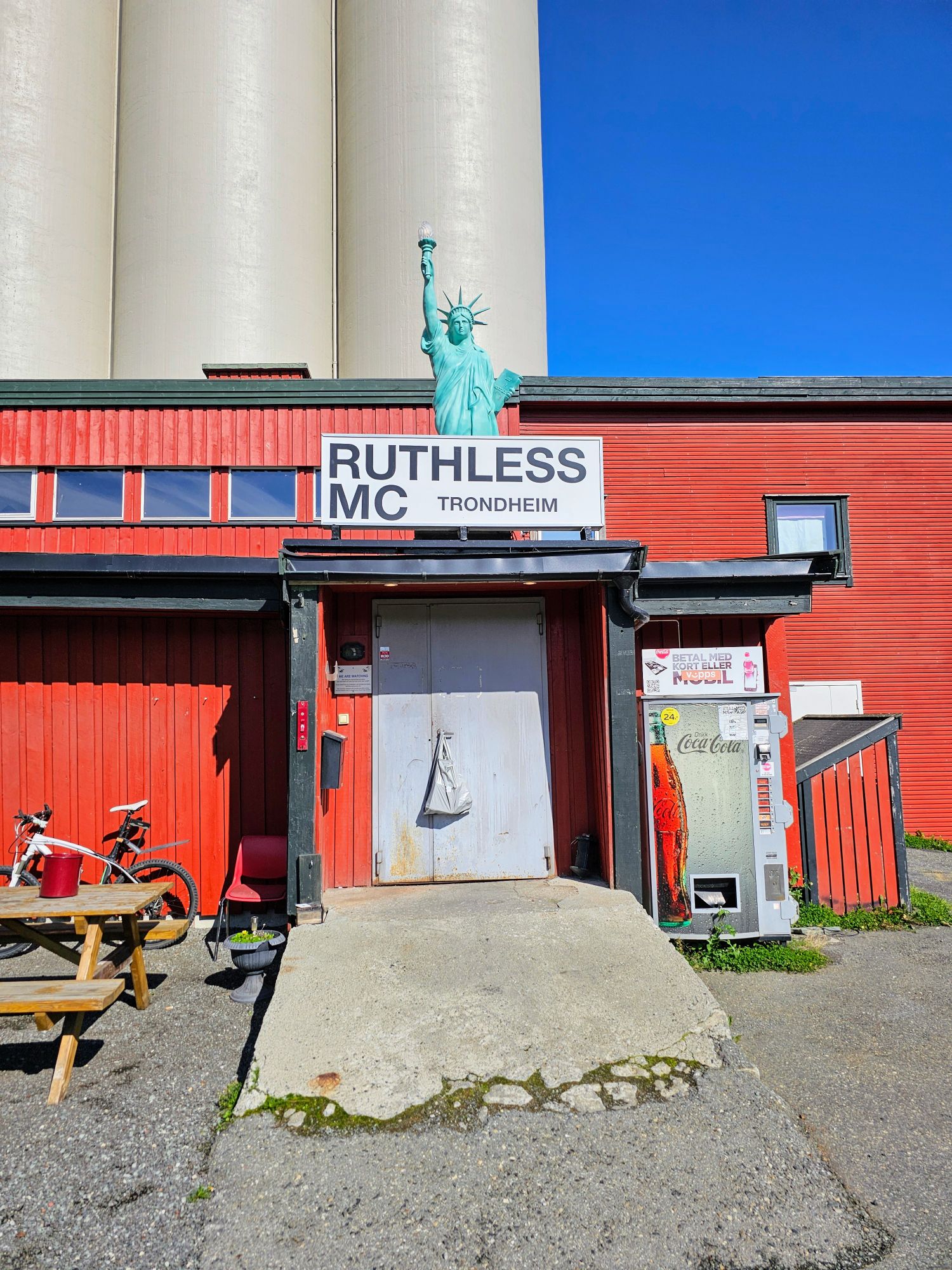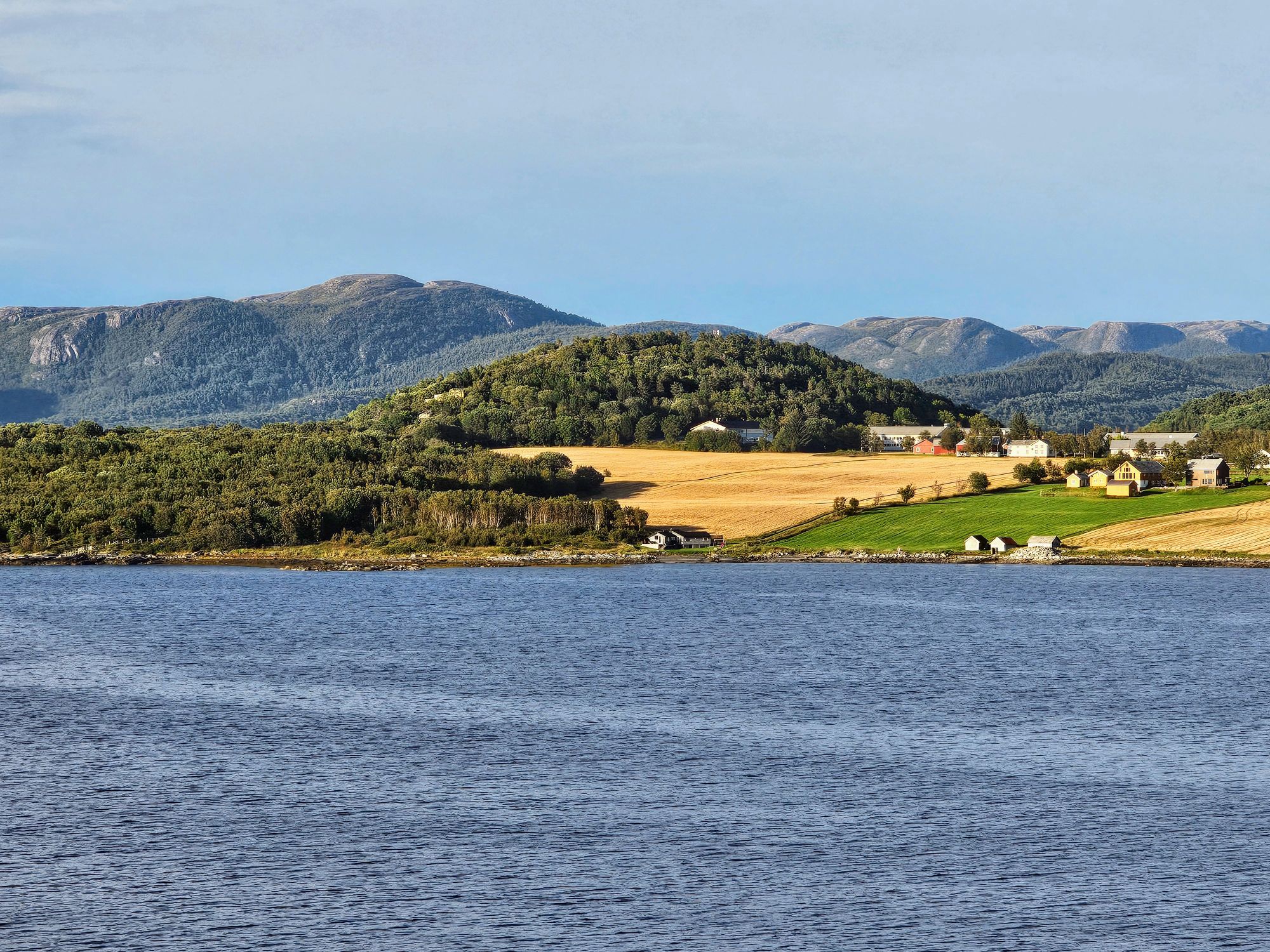Our ship pulled into Geirangerfjord quite early in the morning. We had to wake up early for an excursion, but still missed much of the fjord. Fortunately we’ll be able to see it on the way back out. The lighting in the morning wasn’t great due to the cloud cover. Geirangerfjord is a UNESCO World Heritage site, and is perhaps the most beautiful spot we have ever visited….so there will be a lot of media on this post!
At the end of the fjord is the beautiful little village of Geiranger, where our ship anchored out. Very picturesque!
Before departing the ship I had to get a shot of this beautiful farmhouse on the shoreline. Geiranger is simply stunning!
When we boarded our RIB boat we saw a reporter on the shoreline who happened to be reporting live on Norwegian TV. One of the Norwegian Princesses, 52 year-old Martha Louise, was getting married later the same day to an American in a ceremony here in Geiranger. Oh joy! Hope it doesn’t impact our visit!
Our guide received a clip from a friend of the live report. You can see us walking at the front of the group, boarding, and sitting in the front of the boat. Good to know we are famous in Norway now….maybe we’ll get some free cod! No, I have no idea what’s she’s saying. She could be commenting on the stupid Americans in the background.
As we exited the harbor we cruised past the Norwegian Royal Yacht, here for the wedding between the two freaks. More on them later.
If you come to Geiranger, do the RIB boat tour…the water is super calm, and they get you up close to the most beautiful features in the fjord.
Here is a short video as we head out of the harbor area.
This is another video as we approach the Seven Sisters and Bridal Veil waterfalls.
Here is the Seven Sisters waterfall. Apparently if you visit in May or June it’s quite a bit more impressive, but we were impressed enough!
It deserves it’s own video. I know, too many videos, but Geirangerfjord deserves as much attention as possible.
Here is a shot of the gorgeous Bridal Veil Falls.
One more from another angle. As I said previously, the RIB boat tour gets you right up next to the waterfalls.
Our guide pointed out this farm that sits well up above the fjord, and the only way to get there is to hike up. These Norwegians are hardy souls!
We passed our ship sitting at anchor on the way back into the harbor. We have really loved this ship!
We had some time to kill as we had an afternoon excursion, and we saw no reason to take a tender back to the ship only to return a half hour later. The police officers were everywhere for this royal wedding!
So here is the deal, the Norwegian Princess is somebody who claims to actually converse with angels, and is so freaky that she has been basically disowned by the rest of the royals, much like a certain English Prince. Her soon to be husband is an American from Sacramento that claims to be a 6th-generation Shaman, who was an Egyptian Pharaoh in a previous life. He counts Gwyneth Paltrow as one of his followers….need I say more?? No, we didn’t see Gwyneth…she’s likely busy trying to develop a poop flavored ice cream.
Regardless of the freaky Princess’ views, the locals came out in droves to wish her well. We took a bus up the local mountain road for an excursion, and passed the locals who were all lined up hoping for a view of the freaky two! They all waved to us thinking we were part of the wedding party…very weird experience!
Our second excursion in Geiranger was “Hiking Westeras”, which takes you on a steep but not too long hike up to a beautiful waterfall. The first part of the trail is on a dirt road, part of which runs through a sheep farm, so watch your step!
You’ve got to stop every 100 meters and look around…the scenery is gorgeous!
The Storsaeterfossen waterfall comes into view to let you know you are nearly there.
This is the view of the river above the waterfall.
There is a short trail that leads you down to the waterfall. You can see people hiking further down the trail on the left.
The trail actually takes you behind the waterfall, so of course we had to ask one of the other hikers to take a photo for us.
On the way back the sun was just starting to hit one of the small glaciers across the valley. So stunning!
After completing the hike we had this view looking back down towards Geirangerfjord. Just takes your breath away!
We grabbed some snacks and wine and sat out on our balcony as the ship cruised back out of the fjord. Here is the Seven Sisters yet again.
This is the view looking forward, just past Seven Sisters waterfall.
As well as the corresponding view looking aft.
The fjord makes several nearly 90 degree turns, so the views change constantly.
We were very fortunate with the weather…an absolutely picture perfect day to be in Norway!
As we broke into the open ocean, I popped my head outside and caught this fairly rare atmospheric phenomenon called a “sun pillar”, where the sun is reflected vertically. This one is after sunset. In all my years of sailing, I’ve not seen a vertical one of these, just the “sun dog” which is horizontal.
Coming up next, we visit Flam, Norway, which sits at the end of yet another beautiful fjord, this one called Aurlandsfjord.
